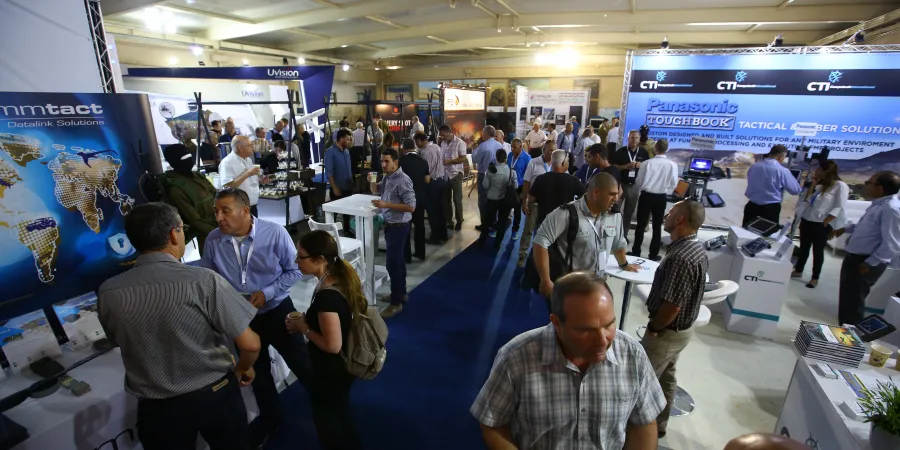Latrun Week: Special Coverage
Over a thousand people from around the world gathered this week at the Armored Corps Memorial Site in Latrun to participate in the 2nd International Ground Warfare and Logistics Conference and the 4th International C5I Conference
IsraelDefense
| 19/05/2017
Senior international military officials, industry leaders, and defense experts convened this week for the premier defense conferences of 2017: the 2nd International Ground Warfare and Logistics Conference and the 4th International C5i Conference.
The leading defense companies in Israel – including IAI, Elbit Systems, Rafael Advanced Defense Systems, IMI Systems, UVision, and many more – presented their cutting-edge innovations and developments in the accompanying exhibition.
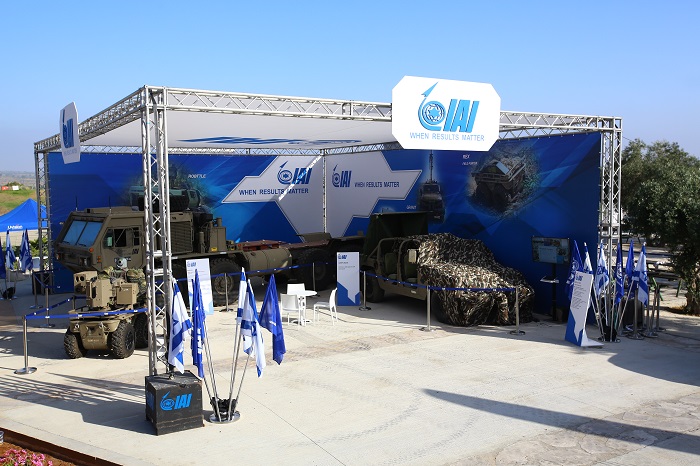
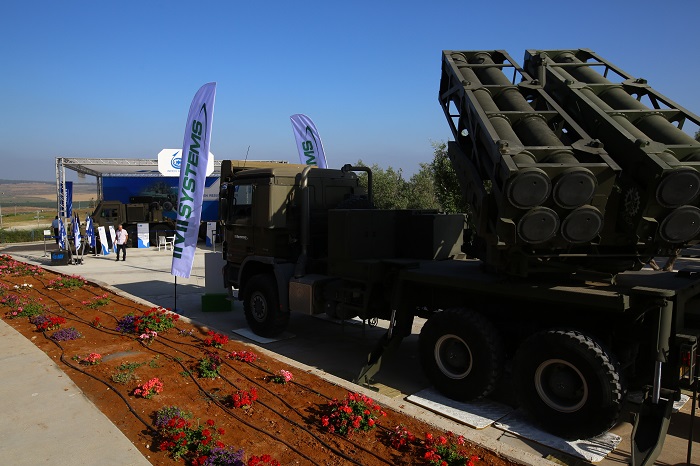
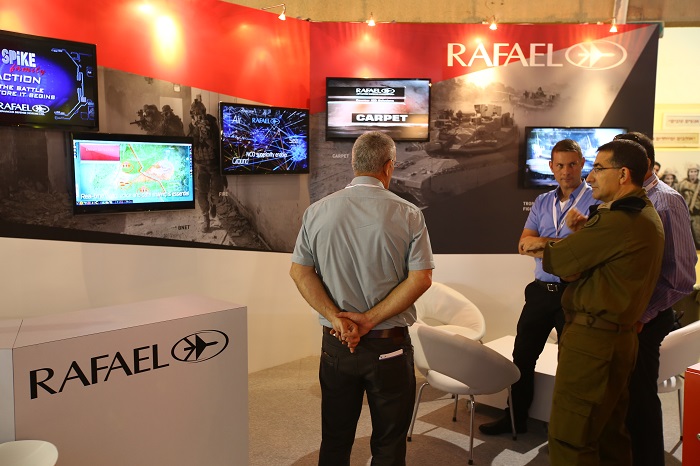
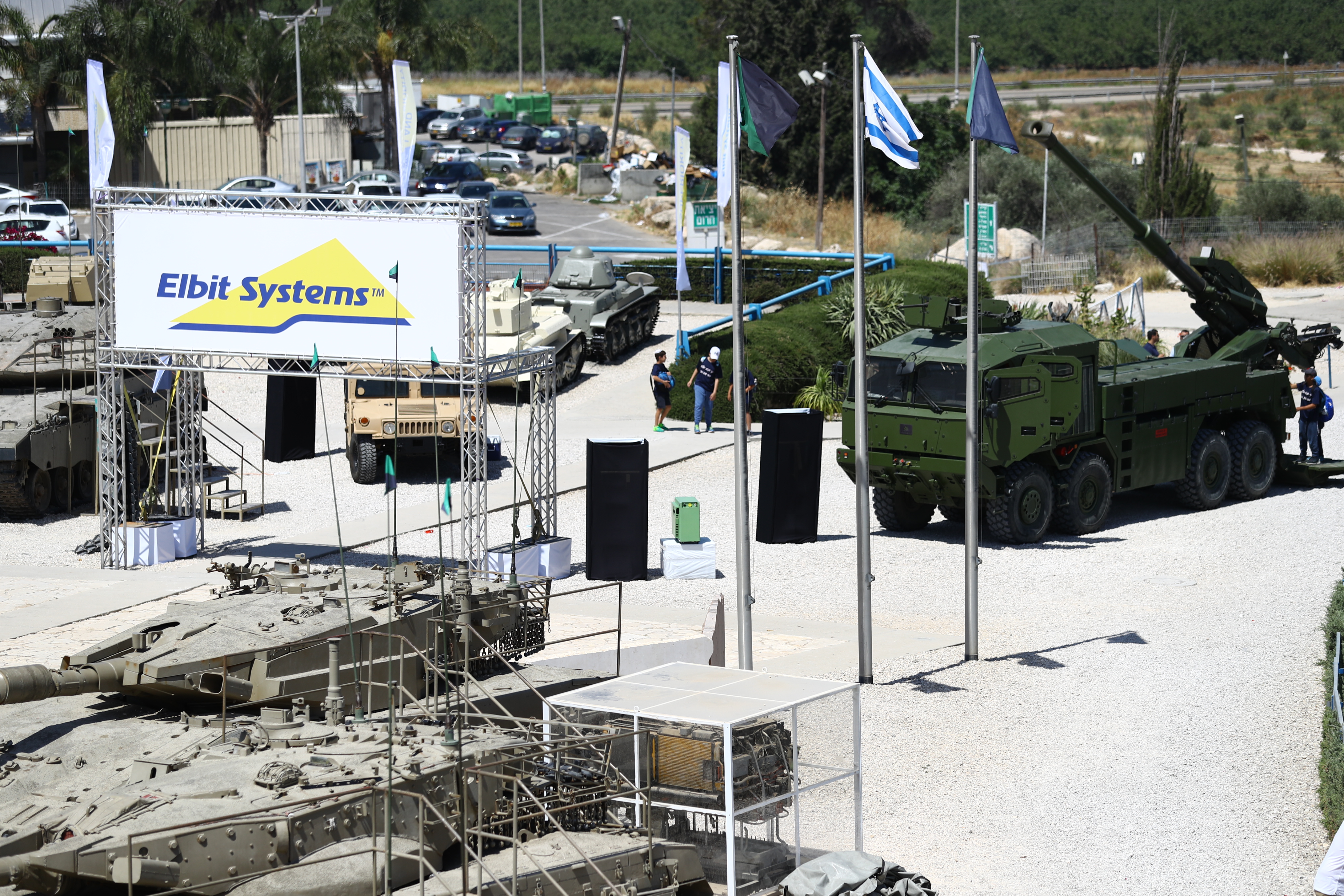
The 2nd International Conference for Ground Warfare and Logistics
The 2nd International Conference for Ground Warfare and Logistics, with participation of high-level IDF officials, defense industry leaders, foreign militaries and academia, addressed various aspects of ground warfare in a complex environment. The conference was organized by the Armored Corps Association in Latrun and Israel Defense.
"It's Time to Eliminate Assad"
"It's time to have Assad eliminated and once we have cut off the serpent's tail, we can move on to the serpent's head, which is Iran. The process currently taking place in Syria is a low point the likes of which has not been experienced since World War II. It is traumatic and catastrophic." These harsh words were spoken by the Israeli Minister of Construction & Housing, Maj. Gen. (res.) Yoav Galant, as part of his address at the 2nd International Ground Warfare & Logistics Conference.
"It is time to have the Assad regime eliminated. I assume the world will know how to eliminate ISIS and similar Jihadist organizations, but in Syria the situation is different. Syria is backed by a world power, Iran, which possesses the resources and the knowledge – and it is a danger to world peace and security."
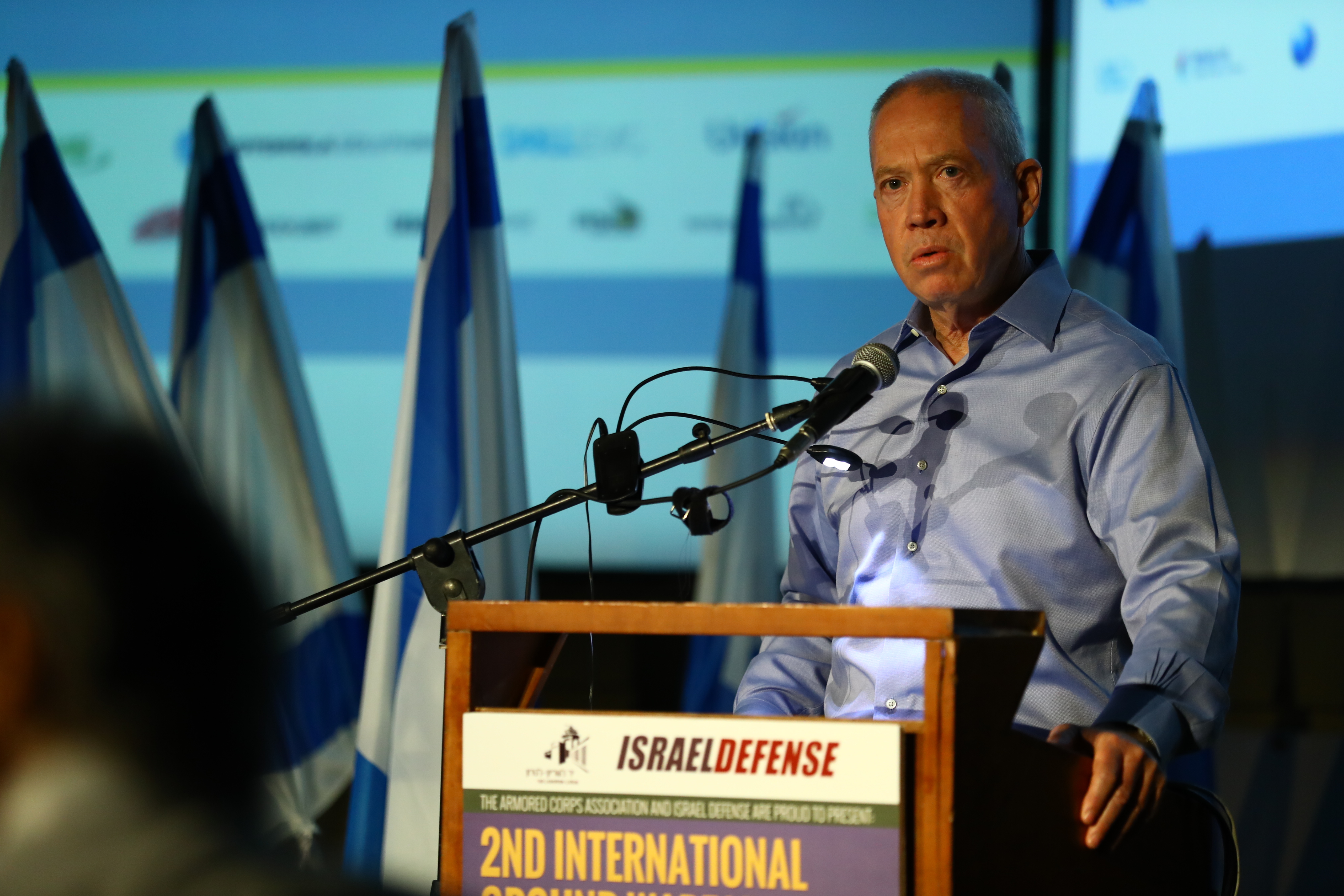
"Today's enemy is a disappearing, hidden, decentralized enemy deployed in the subterranean medium – it cannot be seen. This is the type of enemy the IDF is current facing, and in order to cope we should build up the force on the basis of the principles of maneuvering and offensive operations," said the commander of the IDF Ground Arm, Maj. Gen. Kobi Barak. He stressed the importance of evolving technology and the integration thereof in ground warfare operations and said that the ability to detect the enemy using airborne platforms and sensors is essential in order to enable identification and engagement of enemy targets.
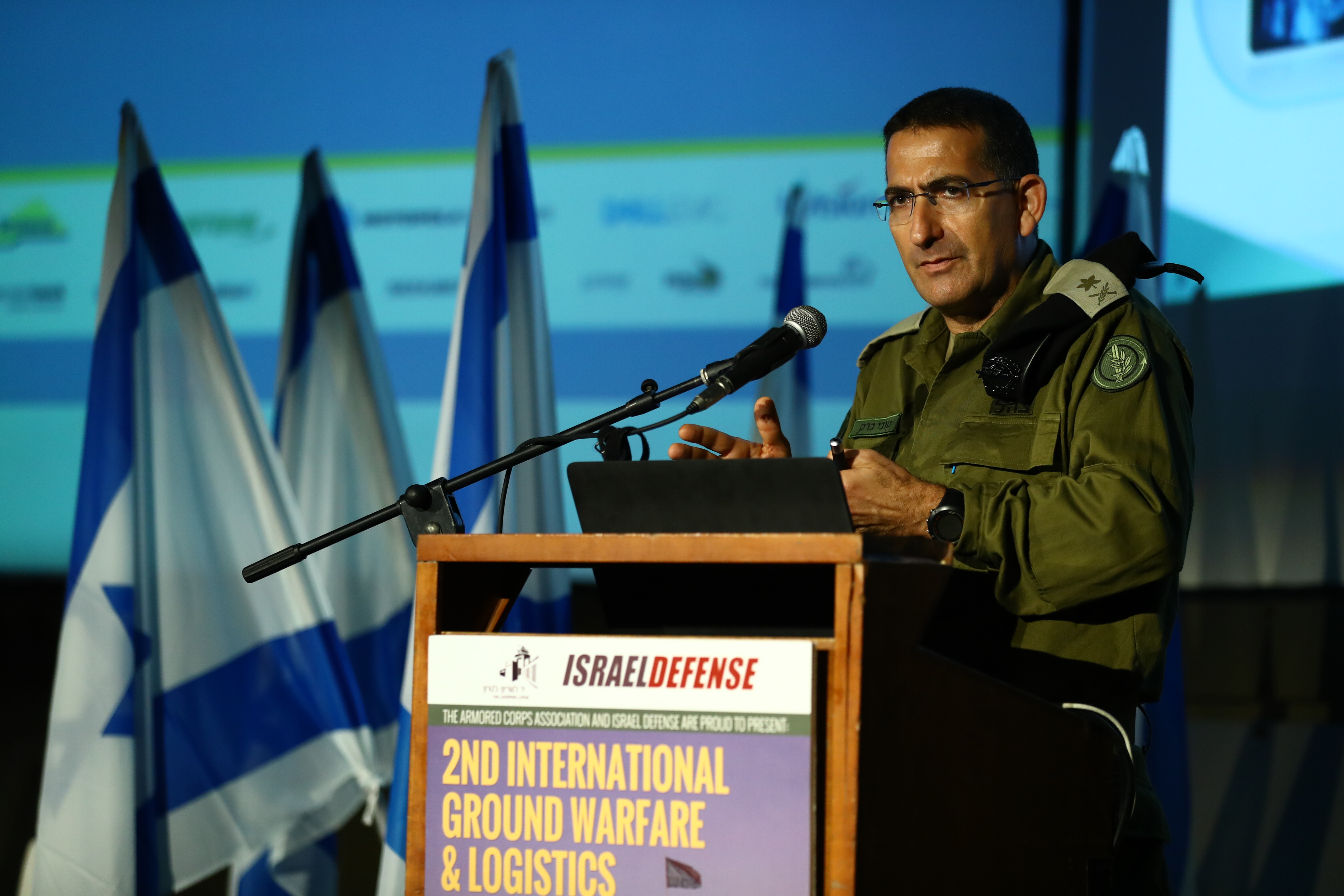
Maj. Gen. Timothy McGuire, Deputy Commanding General, US Army Europe presented the current deployment of the US Army and NATO armies on the European continent, in view of the steps taken by Russia in Georgia and the Ukraine. "We redeployed our tanks in Europe," said Maj. Gen. McGuire. Today, the US military maintains a European OrBat of two brigade-size combat task forces with a substantial aerial force, engineering elements, communications and staff elements, and these forces provide NATO with early warning capabilities in addition to the combat potential. The US armed forces currently deployed in Europe practice rapid deployment. US troops learn how to live and cooperate with Polish troops. They learn how to cooperate with their host countries.
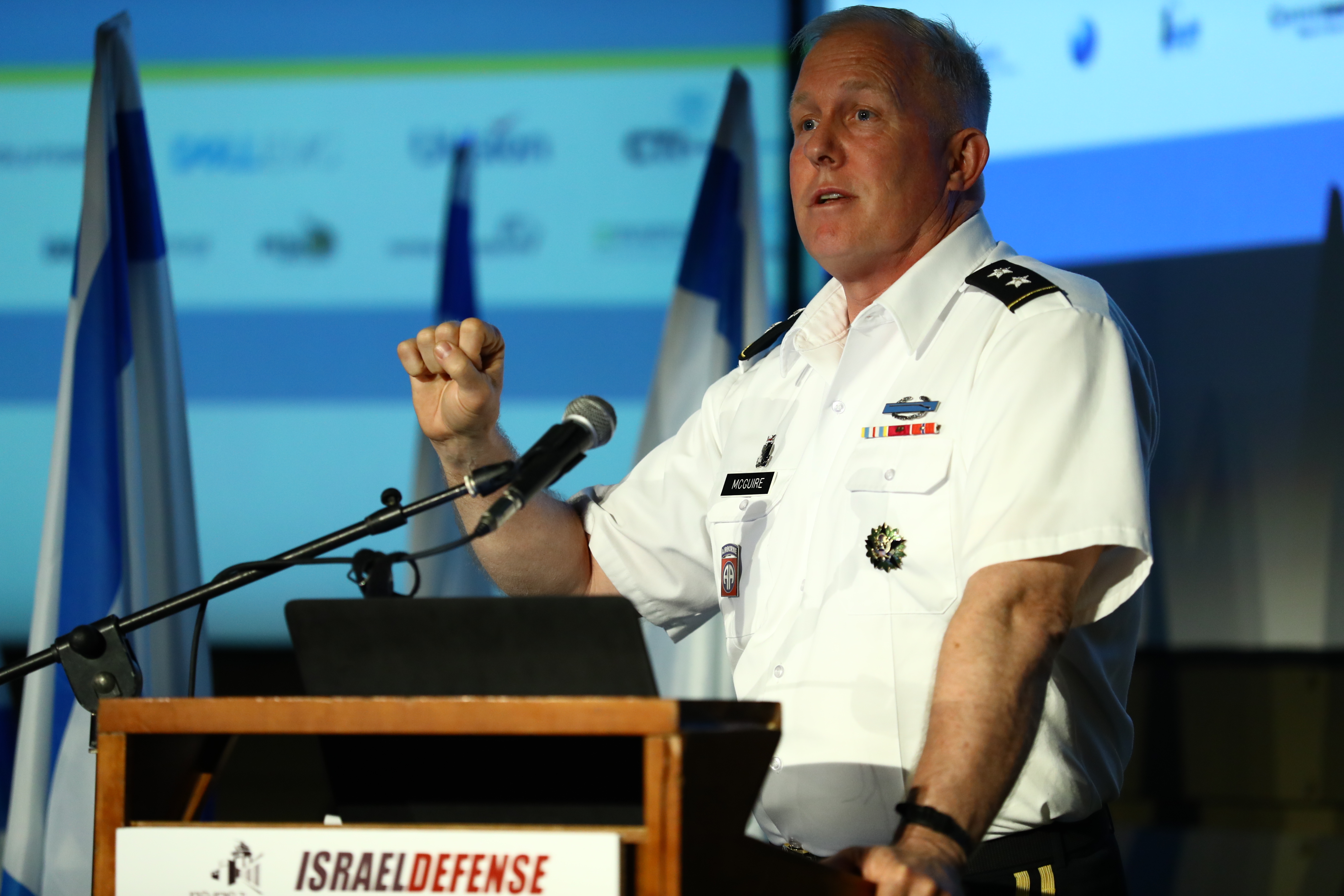
"Not much has changed since 2006"
"The world of the Armored Corps does not change as rapidly as people may think. It is difficult for us, the people, to change. Not much has changed since 2006. The enemy and the environment have remained the same," said Brig. Gen. Guy Hasson, Chief IDF Armored Corps Officer. "We have just signed a mega-deal for the Trophy system. That will make a change.
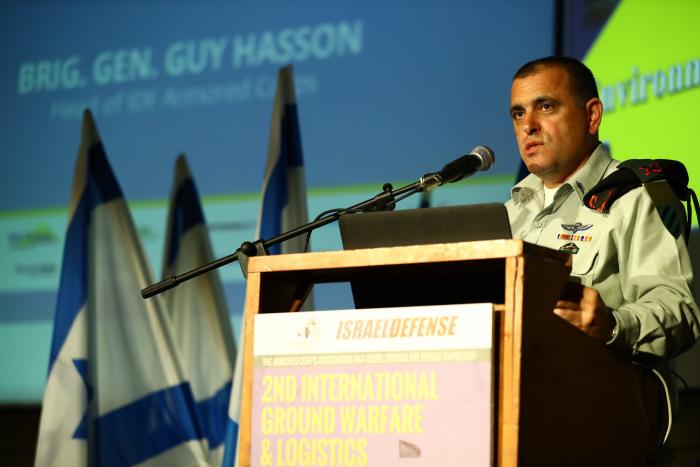
"To this day we have been busy disrupting the enemy. We have not succeeded in reaching a sufficient degree of lethality vis-à-vis infantry elements. The first time that I had a projectile capable of killing infantry troops was during Operation Protective Edge. That was also the first time when the ground network led to a breakthrough in our capabilities. It is the element that succeeded in leading us to break out of our conceptual boundaries. For the first time, during Operation Protective Edge, the network evolved into a network for the masses."
The Latest Israeli Armored Vehicle Developments
Brig. Gen. Baruch Matzliach, Head of IMOD's Tank Administration (MANTAK) addressed the primary projects in the field of armored vehicles and tanks. "Today," he said, "Production lines in the State of Israel turn out Merkava Mark-IV tanks fitted with the Trophy system and Namer APCs also fitted with the Trophy system. However, the IDF prepares for threats on the battlefield, and today's threats to armored platforms are kinetic weapons (from small arms to 120mm tank guns), shaped-charge munitions (RPG rockets and ATGMs) and belly and roadside charges (IEDs). These are the threats that currently exist on the battlefield, mainly in urban combat zones."
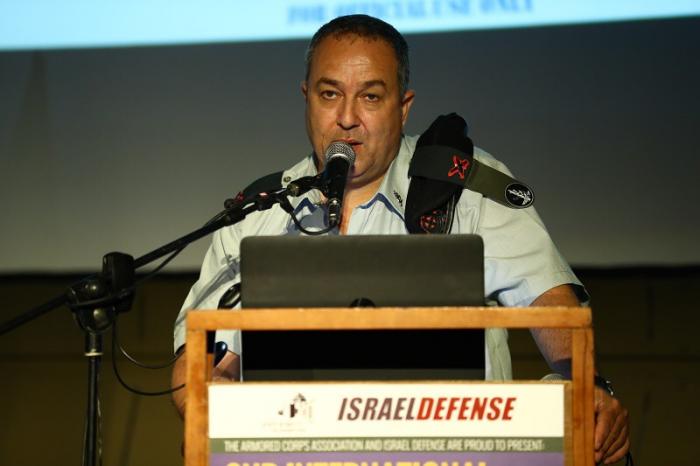
Exclusive: a Simulation of Project Carmel
Brig. Gen. (res.) Didi Ben-Yoash, Head of Carmel Development Team at IMOD's Defense Research and Development Directorate (DDR&D, also known as MAFAT) and formerly Chief IDF Armored Corps Officer, presented a simulation of Project Carmel – a future technology demonstrator for the IDF Armored Corps. The objective of this long-term program is to develop the technological infrastructure for the future armored platform that will constitute a quantum leap with regard to the primary characteristics of the future platform – operation, weight, size and survivability.
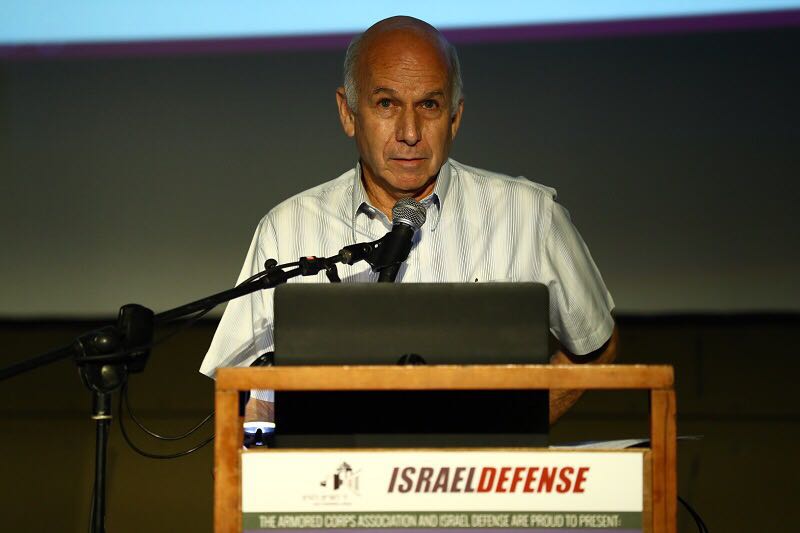
"Israel is Facing a Strategic Turning Point"
Maj. Gen. (res.) Amos Gilad, currently heading the Institute for Policy and Strategy (IPS) at the Interdisciplinary Center (IDC) in Herzliya, referred to Israel's current national security situation: "We are currently living in the best security era ever, although we face unprecedented challenges. For the moment, we are enjoying a period of security tranquility, although this might change in the coming years."
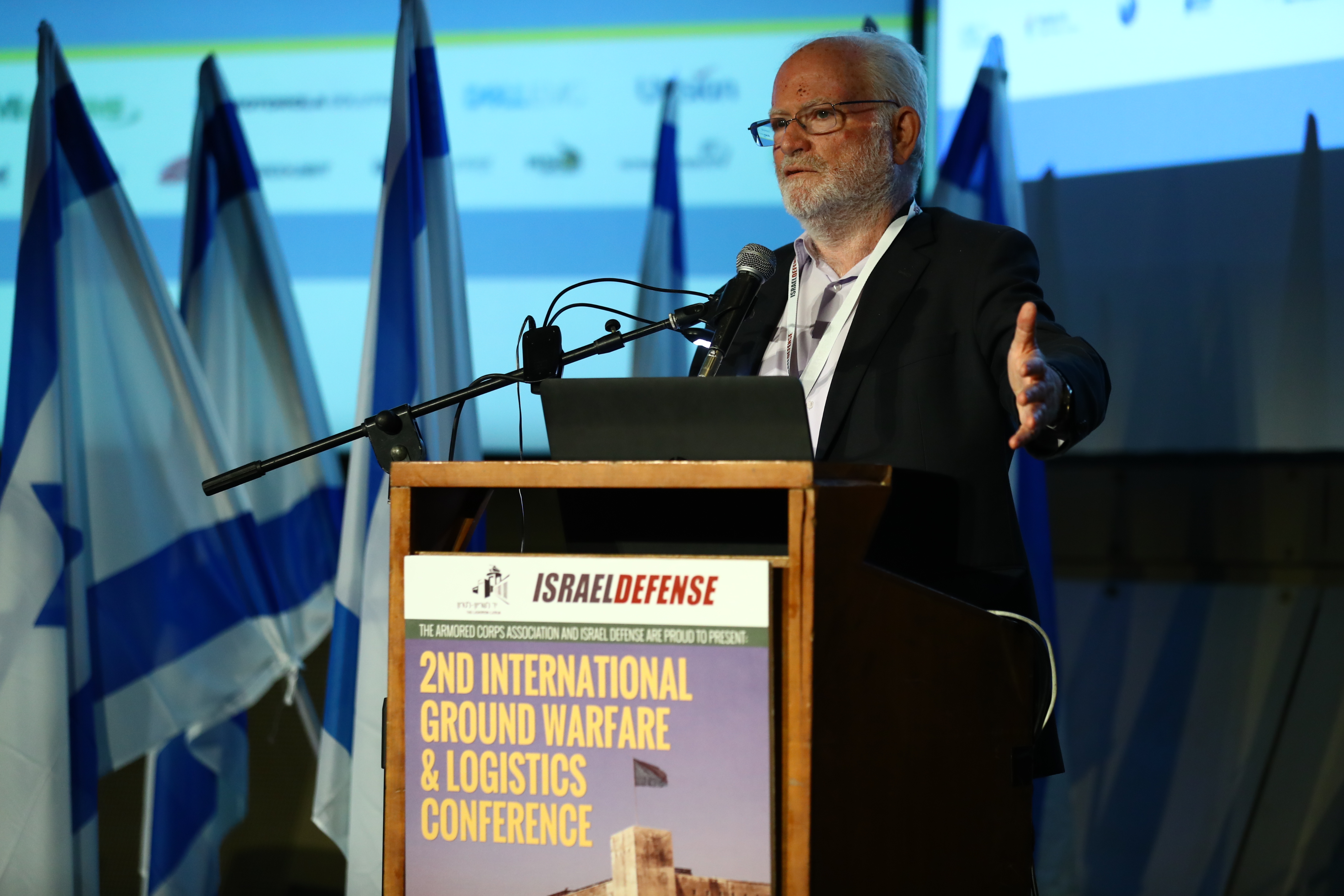
In his address, Amos Gilad stated that Israel is facing a strategic turning point – "ISIS as a state is on the decline. Eventually, ISIS will be defeated as a state entity." According to him, Assad's current strength stems from the fact that he grants permits of presence to the Russians, Hezbollah and Iran. For this reason, Assad has no intention of forsaking his rule and Iran is backing him.
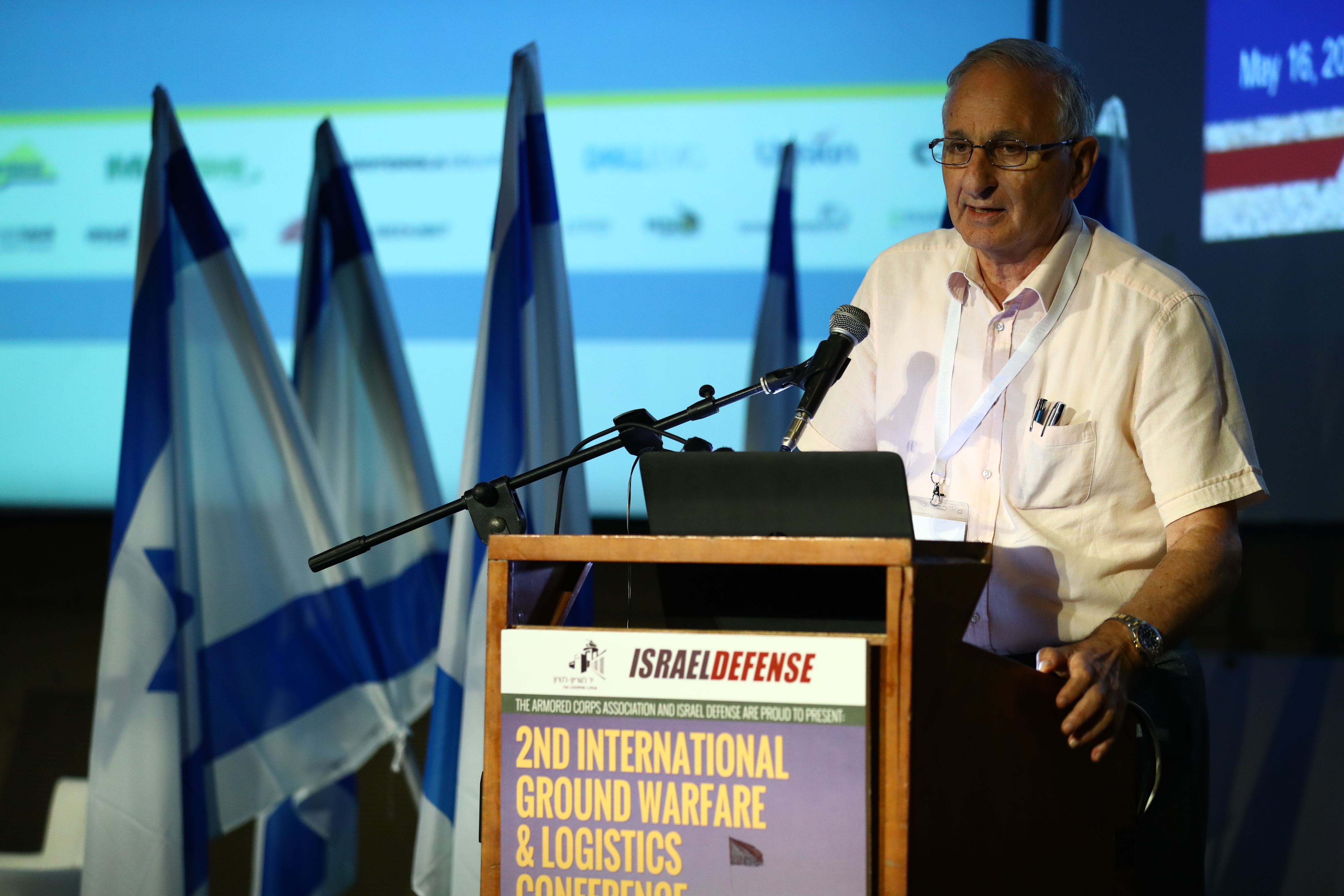
"Loitering weapon systems and loitering munitions provide the optimal solution for battlefield commanders, allowing them to command the vertical medium. Loitering munitions are still in their infancy, but the Americans, for example, intend to publish tenders for the supply of massive amounts of loitering munitions – on the scale of tens of thousands of platforms," said Maj. Gen. (res.) Giora Rom, formerly a senior IAF fighter pilot and commander and presently the Chairman of the Board of UVision, a company that develops and manufactures loitering platforms.
IDF Present: a Remotely-Manned Logistic Future
"Cutting-edge technological developments currently enable the IDF to provide logistic perseverance to the maneuvering combat unit so that it may complete its mission without requiring a long logistic wake," said Brig. Gen. Ziv Avtalyon, Head of the IDF Ground Forces Technological Division.
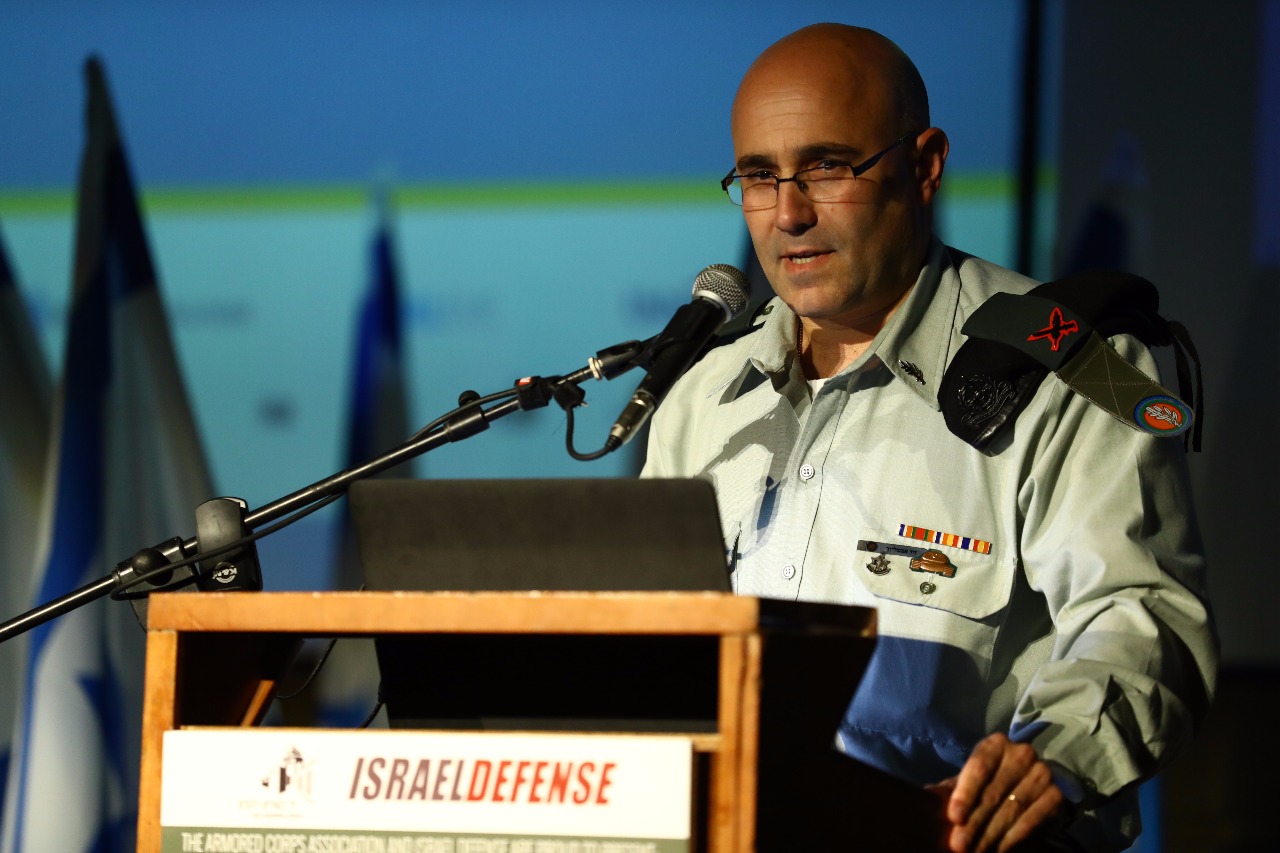
According to Brig. Gen. Avtalyon, maneuvering forces may be resupplied with no need for long, life-threatening and costly supply corridors that must be secured. Technology currently makes it possible to provide the maneuvering element with independence with regard to the availability of fuel, ammunition, fuel and other supplies. Fuel infrastructures may be installed, solar energy may be utilized and 3D printers may be used to produce spare parts and assemblies – all with no logistic wake.
UVision Unveils Hero-400 Loitering Platform
The Hero-400 long-range loitering platform has been presented to the public for the first time at the exhibition complementing the 2nd International Ground Warfare & Logistics Conference.
The Hero-400 by UVision is a long-range loitering unmanned platform capable of hitting a target very accurately at various angles. The new platform carries a substantial 10kg warhead, designed to penetrate fortified positions and engage armored vehicles and infantry targets. The warhead is activated by a percussion/impact, proximity or elapsed time fuze, as per the user's choice.
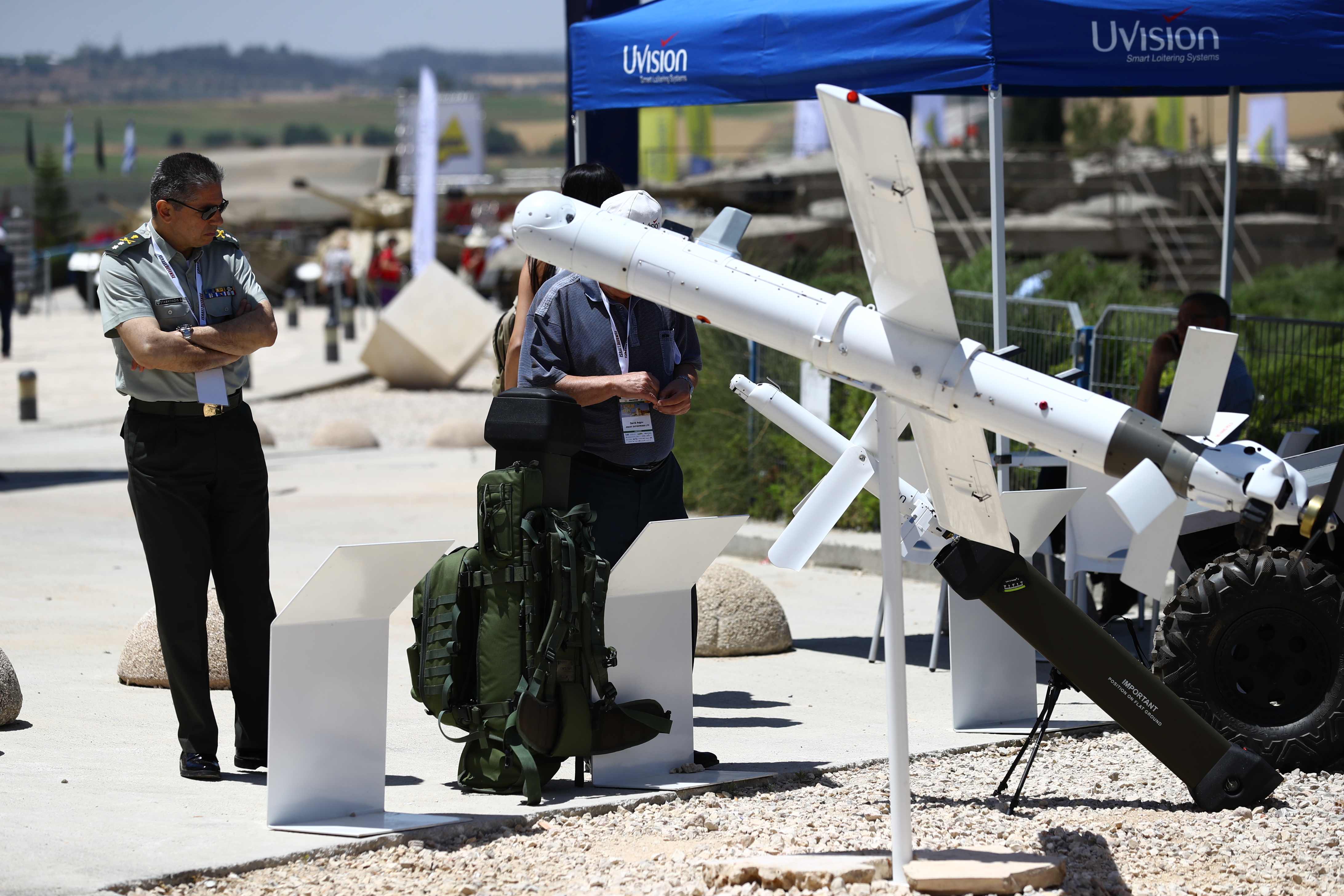
The 4th International C5I Conference
The International C5I Conference will be held for the 4th time this year, with the central theme of “Challenges of Information and Network Warfare”. The conference addressed the core initiatives of the C5I Department and C5I military officials as part of the multi-year “Gidon” plan.
The conference aimed to serve as a meeting point for all members and stakeholders in the C5I community, including the IDF, defense industries, foreign militaries and security industries, academics, and companies, as a platform for dialogue and information-sharing, cooperation, and development in C5I for air, naval, and ground warfare.
"The Ministry of Communications will establish a Future Technology Division"
Providing the public with the abilities required in order to perform as many processes and transactions as possible opposite the government agencies on line, through the Internet; providing citizens with the communication infrastructures that would enable them to benefit from a Smart City environment, from networks of autonomous vehicles and from the advantages of a Smart Home. The speakers at the opening session of the 4th International C5I Conference, being held at the IDF Armored Corps Memorial in Latrun at the initiative of Israel Defense, elaborated on these projects, all of which are technology-intensive and some of which are already being implemented.
The first speaker at the conference was Adv. Shlomo Filber, the Director General of the Israel Ministry of Communications, who announced an important organizational revision: the establishment of a new future technology division. His second announcement concerned the field of IoT – the establishment of a steering committee, headed by the DG of the Ministry of Communications, to consolidate and formulate recommendations for such IoT functions as Smart Cities, remote learning, automation of schools and hospitals and connection of home appliances and devices to computer networks. The number of IoT applications is increasing and they are becoming more widespread: future connectivity systems for autonomous vehicles, Smart Cities, management of smart traffic control systems, on-line industry – all of these applications will lead to massive financial savings, in addition to more efficient operation. Filber believes that within a few years, Israel will become one of the ten countries, worldwide, using the IoT world in the most effective manner. The Government of Israel is currently taking numerous organizational and technological steps to lead the country and its inhabitants forward in this field, and the tremendous success of the high-tech and startup industries in Israel assists and supports this trend.
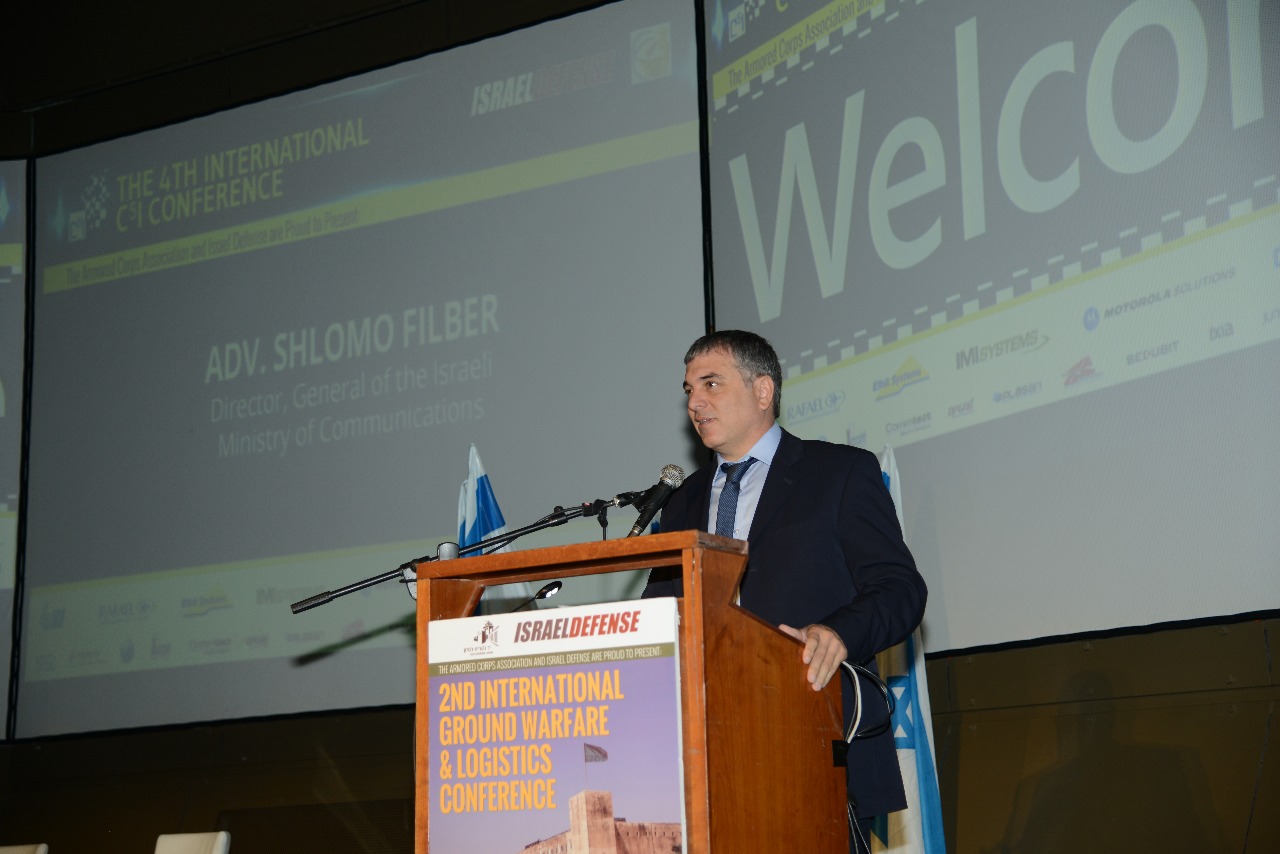
The lecture delivered by Col. (res.) Yair Frank, Head of the Government Information & Communication Technology (ICT) Authority at the Prime Minister's Office, followed in the same direction. Frank presented the slogans "Harnessing technology for the benefit of the citizen" and "Never shove the citizen around". For this purpose, a single, unified government Internet portal was established, using the latest technologies. This portal speaks the language of service to the public. The process of identifying the citizen when he/she contacts a government agency will be carried out on line. A secure network was established to connect the government with the banks, so that citizens may perform on-line transactions from their homes, using their computers, like cancelling a mortgage, purchasing and selling a property, registering their children to day care centers or updating their addresses – everything will be accomplished through the Internet. Additionally, all of the government databases will be made accessible to the public. Even today, a massive increase has been recorded in the number of on-line processes and transactions performed by the public vis-à-vis the government ministries and agencies.
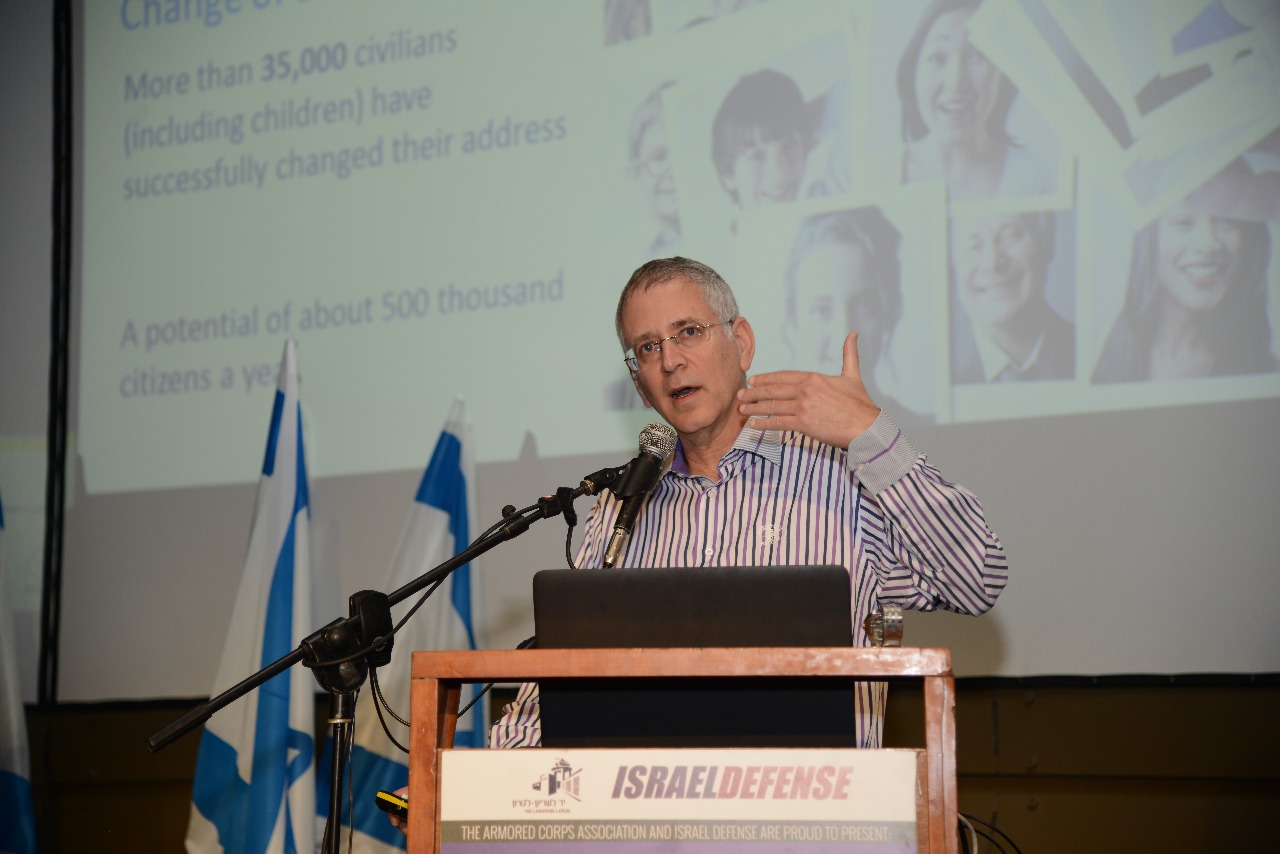
Haim Delmar, VP of C4I and HLS Systems, elaborated on C4I/ICT in the military tactical world, saying: "opposite the current threats, C4I has evolved into an actual weapon system category. Engagement ranges are being extended and missions change at a fast pace. Technology and C4I must provide commanders at the tactical echelons – company commanders, battalion commanders and brigade commanders – with the abilities of receiving information on the move, connecting to combined-arms communications and attaining persistent surveillance (terrain dominance) capabilities. "It takes a year to develop and introduce a new solution opposite a new threat, and that time interval must be cut short so as to provide commanders with real-time updates on the battlefield." For this purpose, technologies should be developed to provide the field commander with one display screen only, through which he would receive the information and updates he requires, so as not to overwhelm him with excessive information. The current mission is to produce, for the tactical world, an environment where all of the systems communicate with one another using the same language, so that the battalion commander may be able to employ his operational resources effectively.
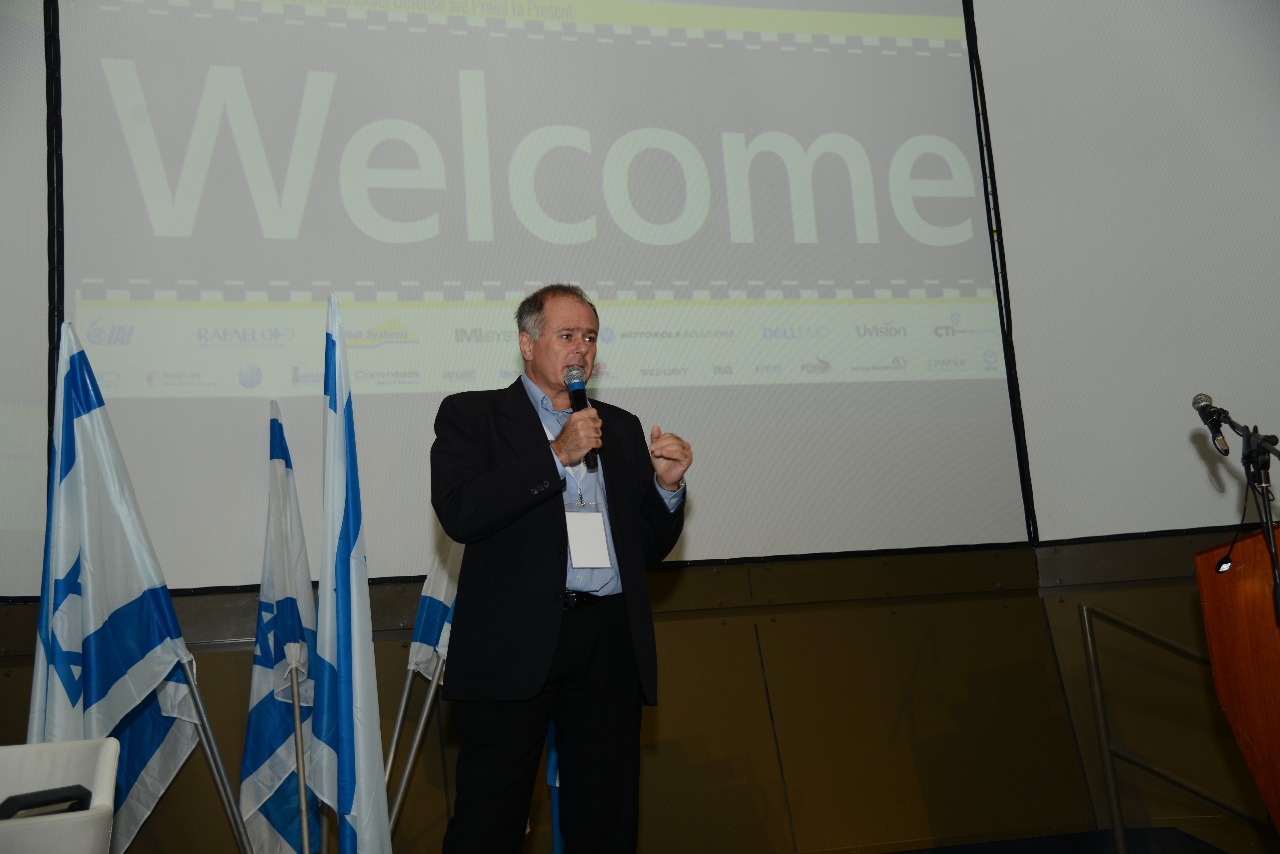
Lt. Col. (res.) Ehud Kauf, the Chairman of the C5I Conference, said that the IDF C4I Directorate is a General Staff element which, over the years, has provided the contents for combined-arms, inter-service connectivity and interoperability and the enforcement thereof throughout IDF. Today, network-centric warfare is of the utmost importance for the benefit of the IDF's operational potential.
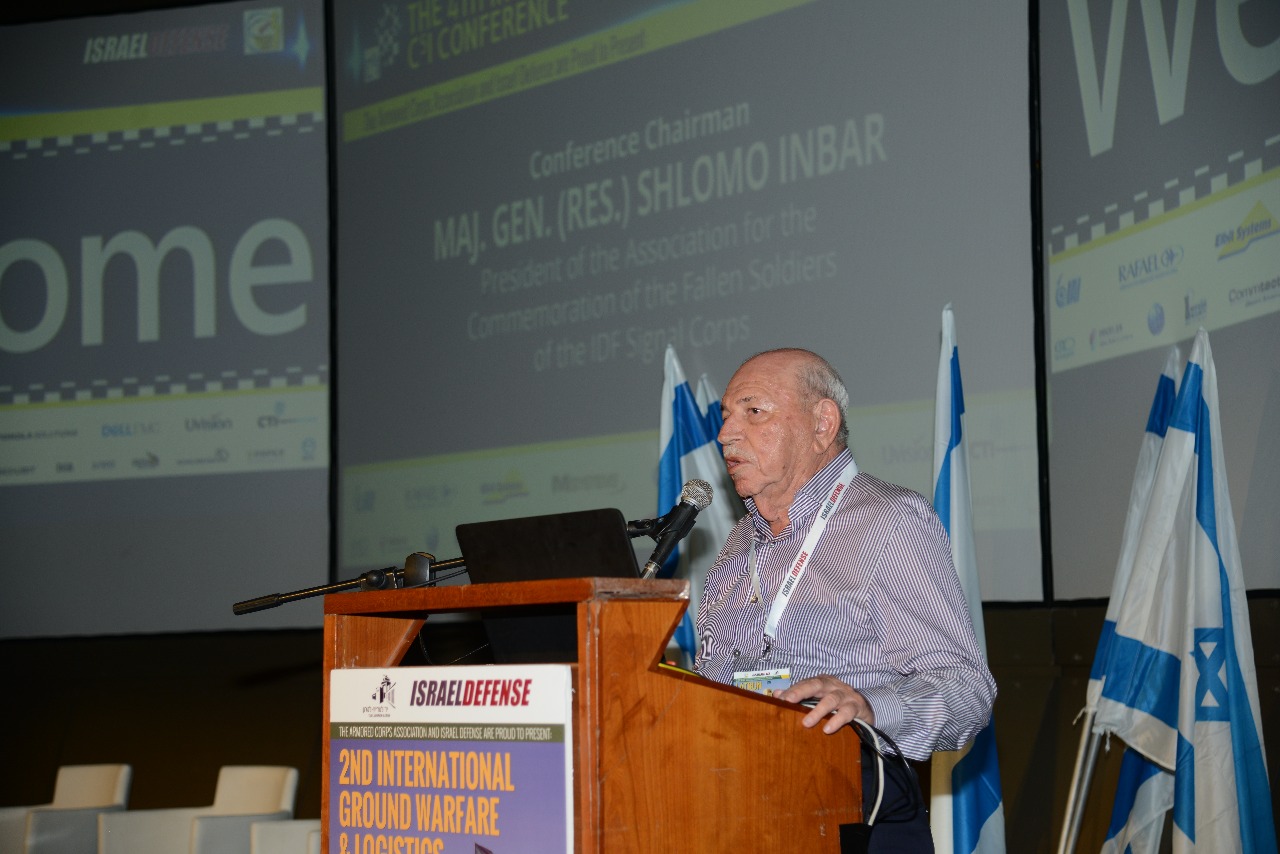
Maj. Gen. (res.) Shlomo Inbar, the President of the C5I Conference who serves as the Chairman of the IDF Communications Corps Commemoration Society, said that cyber is changing all of the production and work processes worldwide. In his opinion, the human environment is contaminated by electromagnetic radiation, and that affects the human mind and behavior. He predicted that a new field of cyber medicine will emerge within ten to fifteen years.
Towards an IDF Cyber Arm?
Maj. Gen. Nadav Padan, Head of the IDF C4I Directorate, announced that an IDF Cyber Arm will be established within Eighteen Months. The IDF C4I Directorate is in the process of establishing a command center for the employment of the IDF cyber force, and an officer has been appointed to head the new Intelligence Department within the C4I Directorate, charged with providing services to the IDF Intelligence Directorate. Are these Padan's de-facto preparations for the establishment of an IDF Cyber Arm?
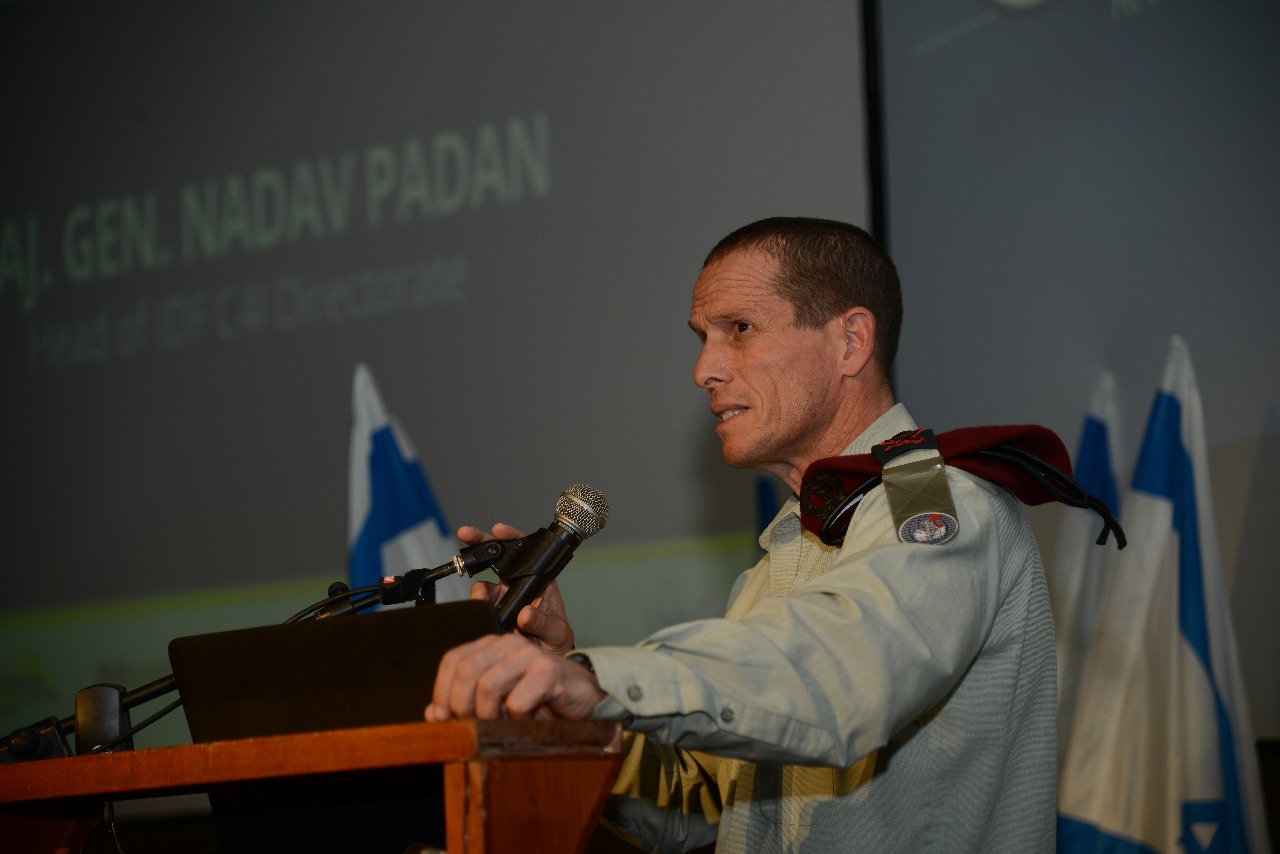
"The IDF C4I Directorate has evolved from a coordinating/connecting element to an element that leads and conducts operations," said Maj. Gen. Padan. "It is not our intention to engage in intimidation or to attempt to say that cybernetics are the new kinetics, but merely to say that this is a new dimension that expands the existing dimensions. We should identify the potential of cyberspace and see where it is going. Since the 'Network IDF' program, another, different revolution has been under way. The human element does not wait for the technology. Technology is waiting for the human element to assimilate it."
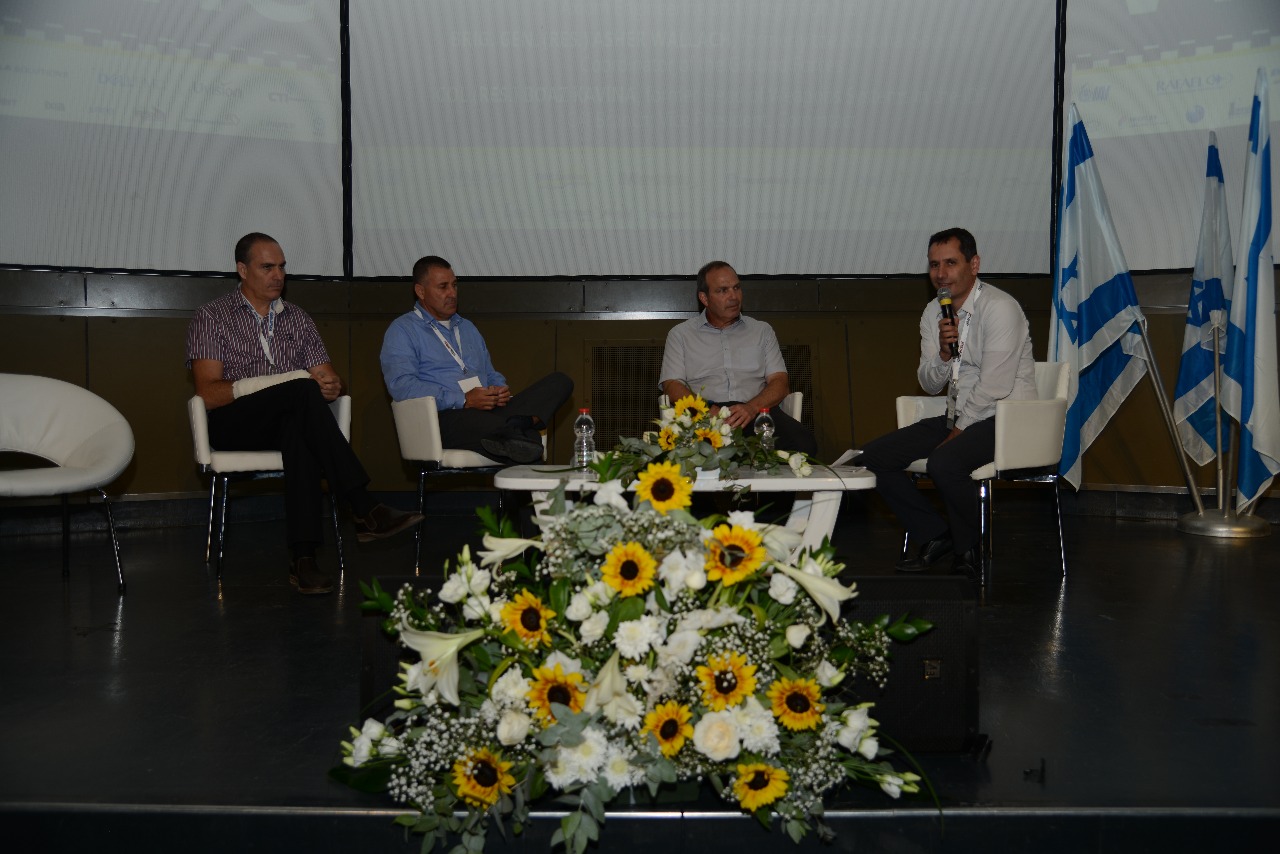

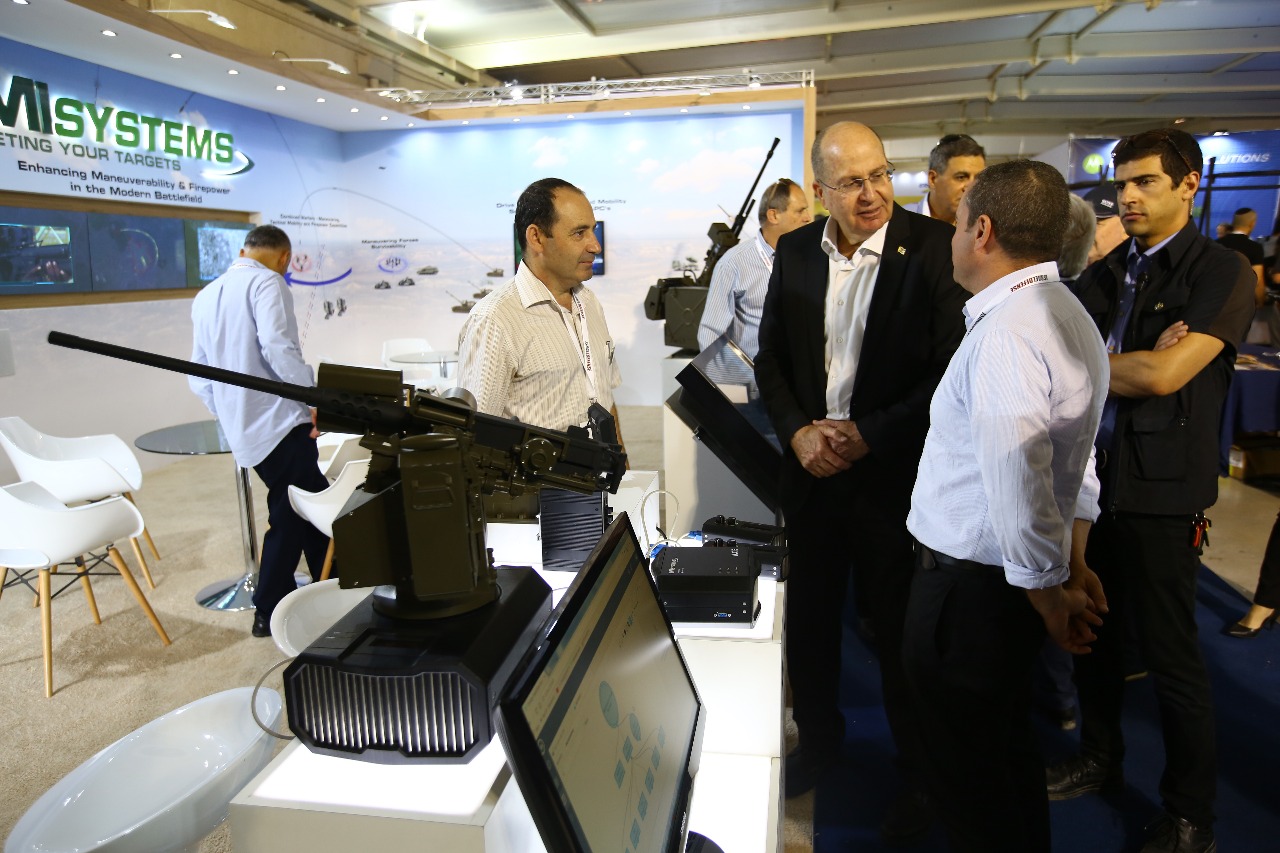
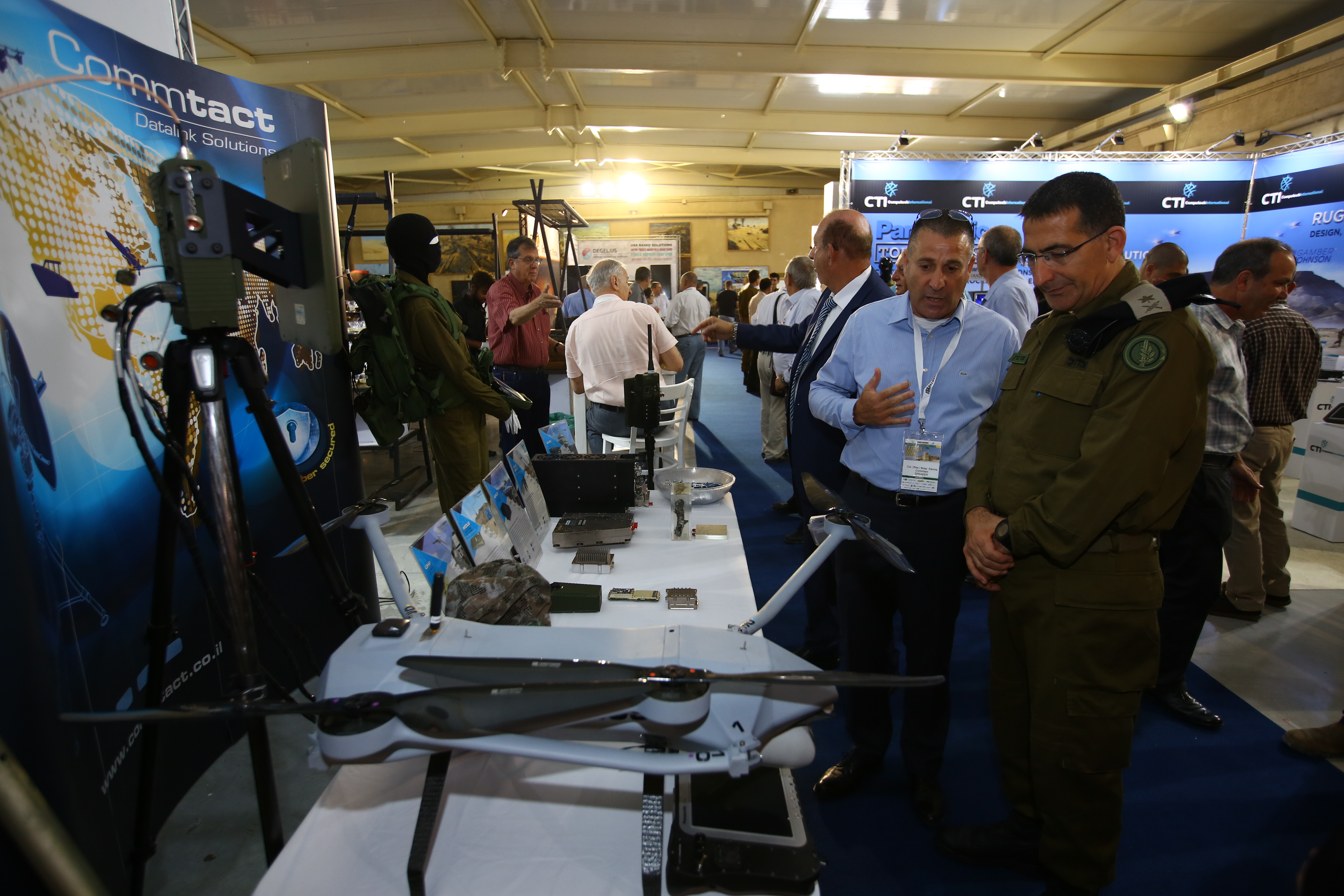
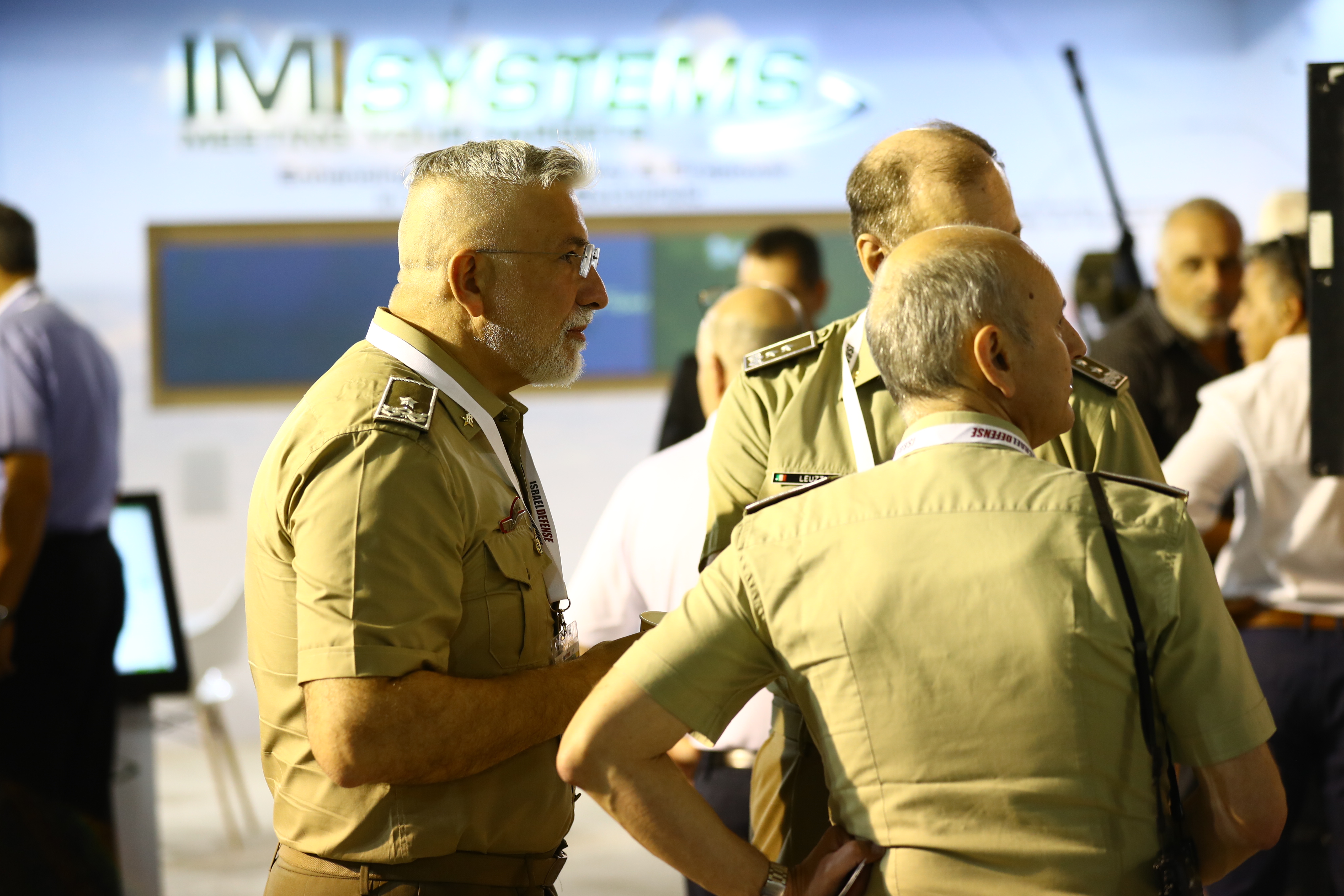
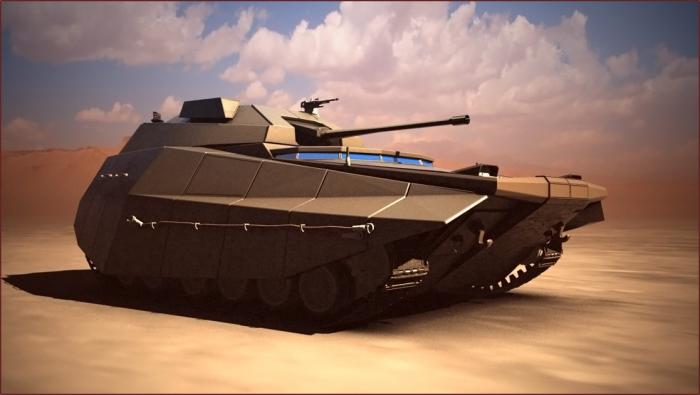
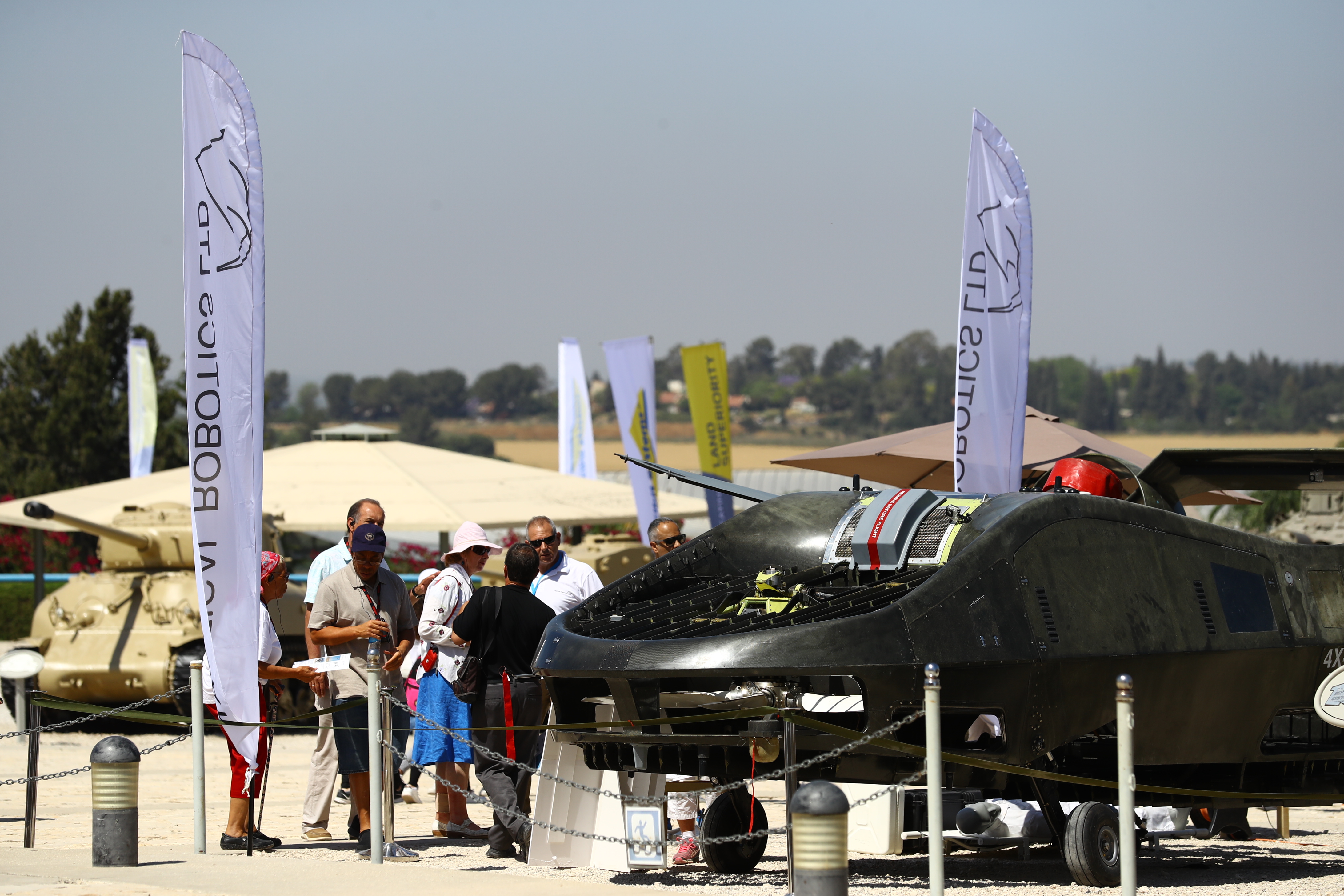
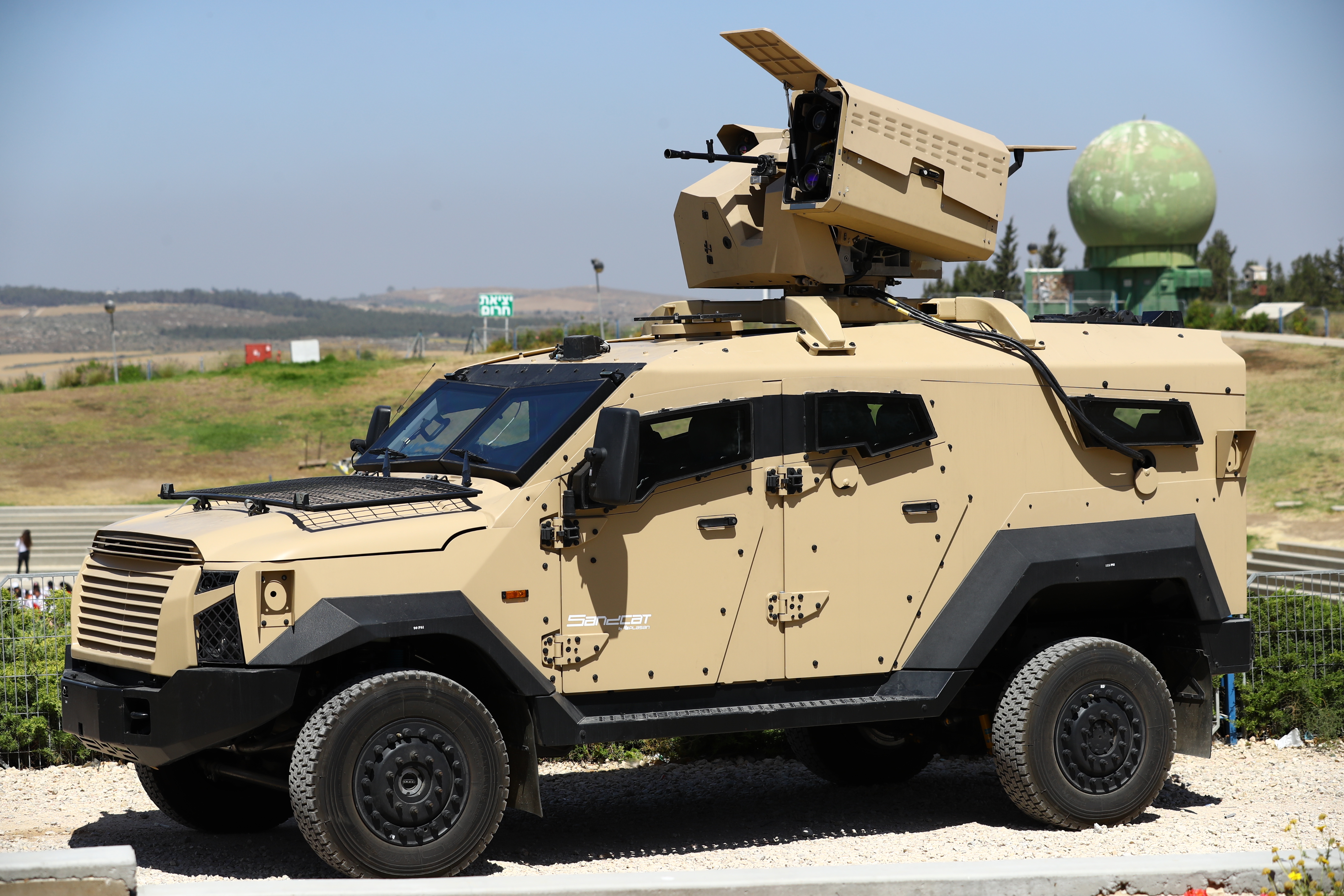
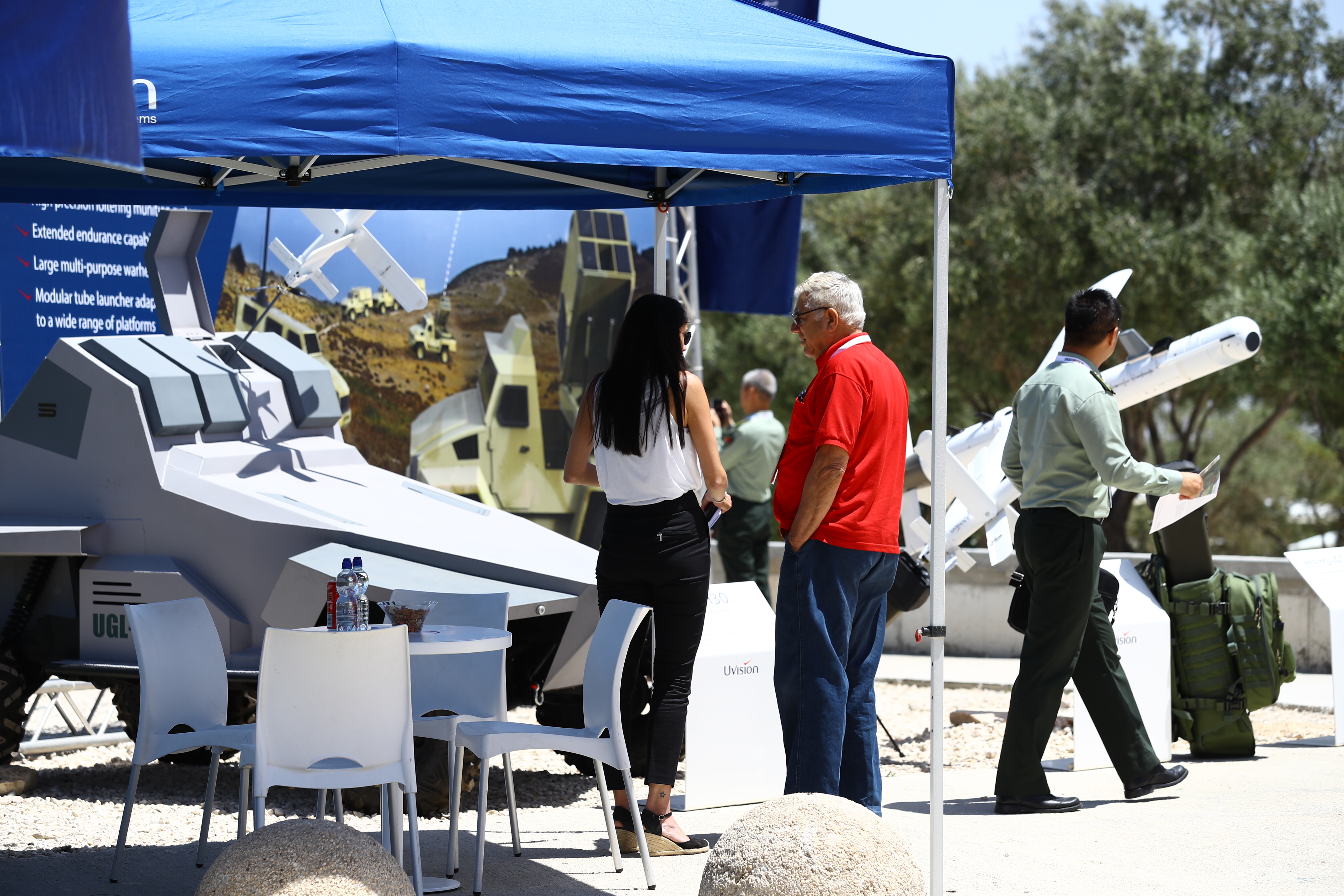
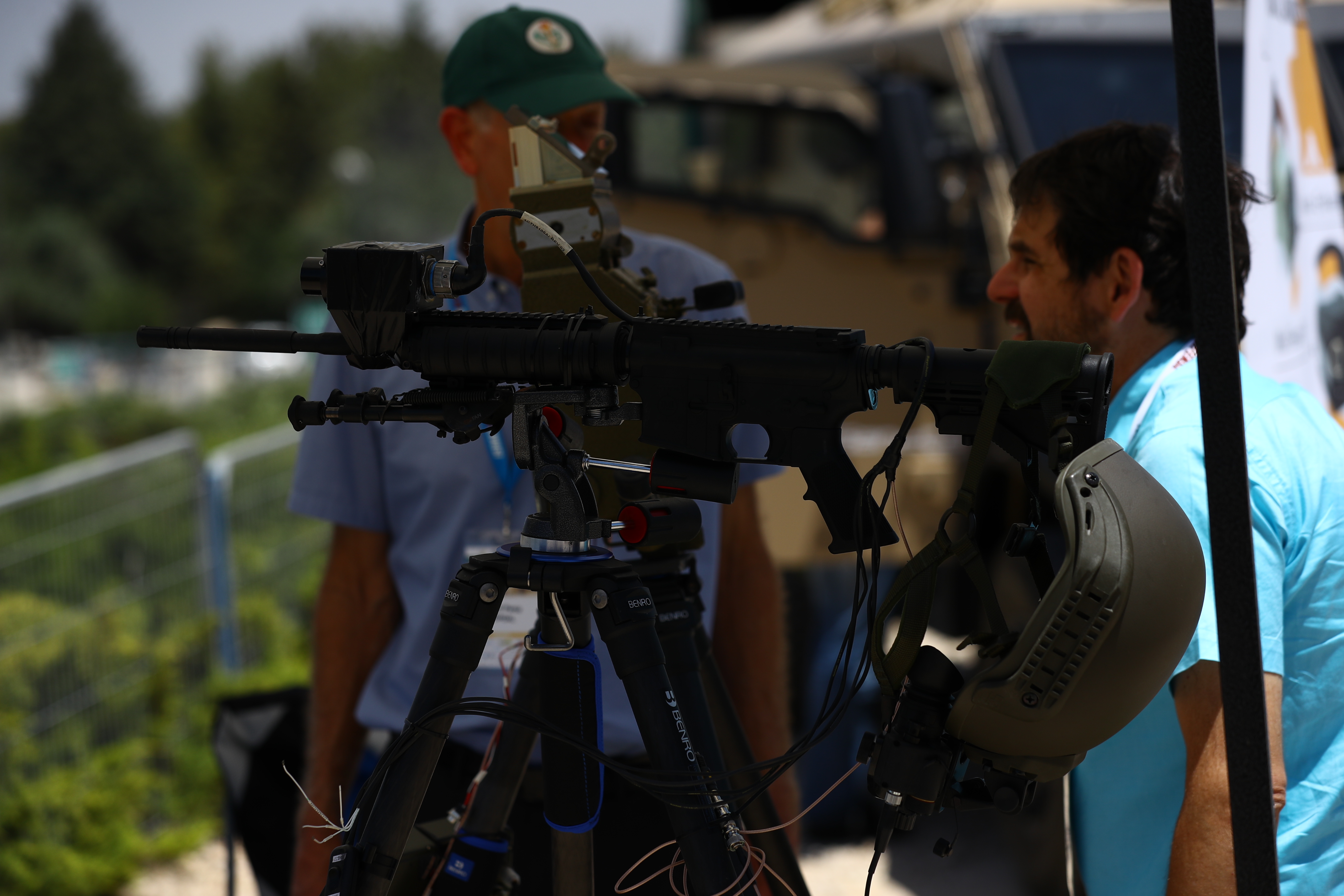
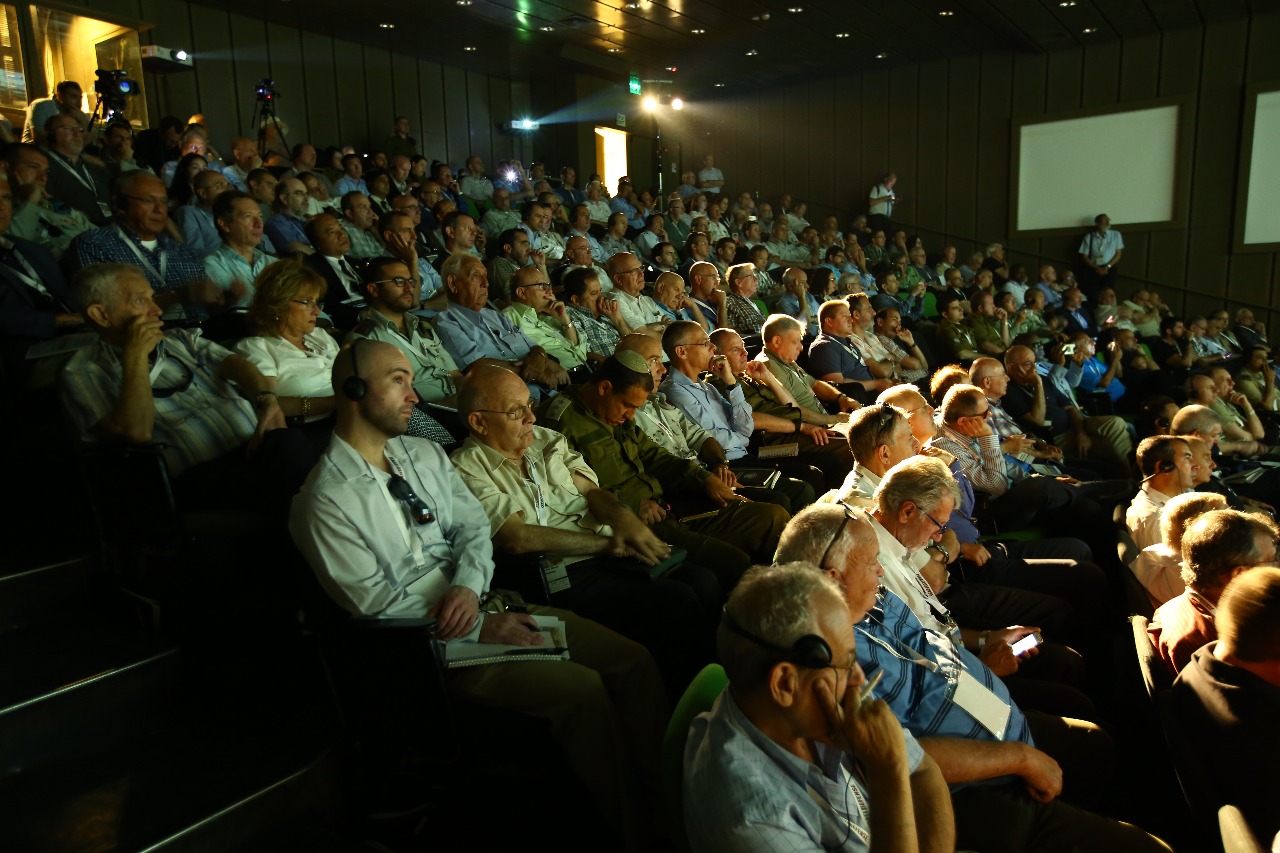
Photography: Gilad Kavalerchik, Meir Azulay
Over a thousand people from around the world gathered this week at the Armored Corps Memorial Site in Latrun to participate in the 2nd International Ground Warfare and Logistics Conference and the 4th International C5I Conference
Senior international military officials, industry leaders, and defense experts convened this week for the premier defense conferences of 2017: the 2nd International Ground Warfare and Logistics Conference and the 4th International C5i Conference.
The leading defense companies in Israel – including IAI, Elbit Systems, Rafael Advanced Defense Systems, IMI Systems, UVision, and many more – presented their cutting-edge innovations and developments in the accompanying exhibition.
The 2nd International Conference for Ground Warfare and Logistics
The 2nd International Conference for Ground Warfare and Logistics, with participation of high-level IDF officials, defense industry leaders, foreign militaries and academia, addressed various aspects of ground warfare in a complex environment. The conference was organized by the Armored Corps Association in Latrun and Israel Defense.
"It's Time to Eliminate Assad"
"It's time to have Assad eliminated and once we have cut off the serpent's tail, we can move on to the serpent's head, which is Iran. The process currently taking place in Syria is a low point the likes of which has not been experienced since World War II. It is traumatic and catastrophic." These harsh words were spoken by the Israeli Minister of Construction & Housing, Maj. Gen. (res.) Yoav Galant, as part of his address at the 2nd International Ground Warfare & Logistics Conference.
"It is time to have the Assad regime eliminated. I assume the world will know how to eliminate ISIS and similar Jihadist organizations, but in Syria the situation is different. Syria is backed by a world power, Iran, which possesses the resources and the knowledge – and it is a danger to world peace and security."
"Today's enemy is a disappearing, hidden, decentralized enemy deployed in the subterranean medium – it cannot be seen. This is the type of enemy the IDF is current facing, and in order to cope we should build up the force on the basis of the principles of maneuvering and offensive operations," said the commander of the IDF Ground Arm, Maj. Gen. Kobi Barak. He stressed the importance of evolving technology and the integration thereof in ground warfare operations and said that the ability to detect the enemy using airborne platforms and sensors is essential in order to enable identification and engagement of enemy targets.
Maj. Gen. Timothy McGuire, Deputy Commanding General, US Army Europe presented the current deployment of the US Army and NATO armies on the European continent, in view of the steps taken by Russia in Georgia and the Ukraine. "We redeployed our tanks in Europe," said Maj. Gen. McGuire. Today, the US military maintains a European OrBat of two brigade-size combat task forces with a substantial aerial force, engineering elements, communications and staff elements, and these forces provide NATO with early warning capabilities in addition to the combat potential. The US armed forces currently deployed in Europe practice rapid deployment. US troops learn how to live and cooperate with Polish troops. They learn how to cooperate with their host countries.
"Not much has changed since 2006"
"The world of the Armored Corps does not change as rapidly as people may think. It is difficult for us, the people, to change. Not much has changed since 2006. The enemy and the environment have remained the same," said Brig. Gen. Guy Hasson, Chief IDF Armored Corps Officer. "We have just signed a mega-deal for the Trophy system. That will make a change.

"To this day we have been busy disrupting the enemy. We have not succeeded in reaching a sufficient degree of lethality vis-à-vis infantry elements. The first time that I had a projectile capable of killing infantry troops was during Operation Protective Edge. That was also the first time when the ground network led to a breakthrough in our capabilities. It is the element that succeeded in leading us to break out of our conceptual boundaries. For the first time, during Operation Protective Edge, the network evolved into a network for the masses."
The Latest Israeli Armored Vehicle Developments
Brig. Gen. Baruch Matzliach, Head of IMOD's Tank Administration (MANTAK) addressed the primary projects in the field of armored vehicles and tanks. "Today," he said, "Production lines in the State of Israel turn out Merkava Mark-IV tanks fitted with the Trophy system and Namer APCs also fitted with the Trophy system. However, the IDF prepares for threats on the battlefield, and today's threats to armored platforms are kinetic weapons (from small arms to 120mm tank guns), shaped-charge munitions (RPG rockets and ATGMs) and belly and roadside charges (IEDs). These are the threats that currently exist on the battlefield, mainly in urban combat zones."

Exclusive: a Simulation of Project Carmel
Brig. Gen. (res.) Didi Ben-Yoash, Head of Carmel Development Team at IMOD's Defense Research and Development Directorate (DDR&D, also known as MAFAT) and formerly Chief IDF Armored Corps Officer, presented a simulation of Project Carmel – a future technology demonstrator for the IDF Armored Corps. The objective of this long-term program is to develop the technological infrastructure for the future armored platform that will constitute a quantum leap with regard to the primary characteristics of the future platform – operation, weight, size and survivability.

"Israel is Facing a Strategic Turning Point"
Maj. Gen. (res.) Amos Gilad, currently heading the Institute for Policy and Strategy (IPS) at the Interdisciplinary Center (IDC) in Herzliya, referred to Israel's current national security situation: "We are currently living in the best security era ever, although we face unprecedented challenges. For the moment, we are enjoying a period of security tranquility, although this might change in the coming years."
In his address, Amos Gilad stated that Israel is facing a strategic turning point – "ISIS as a state is on the decline. Eventually, ISIS will be defeated as a state entity." According to him, Assad's current strength stems from the fact that he grants permits of presence to the Russians, Hezbollah and Iran. For this reason, Assad has no intention of forsaking his rule and Iran is backing him.
"Loitering weapon systems and loitering munitions provide the optimal solution for battlefield commanders, allowing them to command the vertical medium. Loitering munitions are still in their infancy, but the Americans, for example, intend to publish tenders for the supply of massive amounts of loitering munitions – on the scale of tens of thousands of platforms," said Maj. Gen. (res.) Giora Rom, formerly a senior IAF fighter pilot and commander and presently the Chairman of the Board of UVision, a company that develops and manufactures loitering platforms.
IDF Present: a Remotely-Manned Logistic Future
"Cutting-edge technological developments currently enable the IDF to provide logistic perseverance to the maneuvering combat unit so that it may complete its mission without requiring a long logistic wake," said Brig. Gen. Ziv Avtalyon, Head of the IDF Ground Forces Technological Division.

According to Brig. Gen. Avtalyon, maneuvering forces may be resupplied with no need for long, life-threatening and costly supply corridors that must be secured. Technology currently makes it possible to provide the maneuvering element with independence with regard to the availability of fuel, ammunition, fuel and other supplies. Fuel infrastructures may be installed, solar energy may be utilized and 3D printers may be used to produce spare parts and assemblies – all with no logistic wake.
UVision Unveils Hero-400 Loitering Platform
The Hero-400 long-range loitering platform has been presented to the public for the first time at the exhibition complementing the 2nd International Ground Warfare & Logistics Conference.
The Hero-400 by UVision is a long-range loitering unmanned platform capable of hitting a target very accurately at various angles. The new platform carries a substantial 10kg warhead, designed to penetrate fortified positions and engage armored vehicles and infantry targets. The warhead is activated by a percussion/impact, proximity or elapsed time fuze, as per the user's choice.
The 4th International C5I Conference
The International C5I Conference will be held for the 4th time this year, with the central theme of “Challenges of Information and Network Warfare”. The conference addressed the core initiatives of the C5I Department and C5I military officials as part of the multi-year “Gidon” plan.
The conference aimed to serve as a meeting point for all members and stakeholders in the C5I community, including the IDF, defense industries, foreign militaries and security industries, academics, and companies, as a platform for dialogue and information-sharing, cooperation, and development in C5I for air, naval, and ground warfare.
"The Ministry of Communications will establish a Future Technology Division"
Providing the public with the abilities required in order to perform as many processes and transactions as possible opposite the government agencies on line, through the Internet; providing citizens with the communication infrastructures that would enable them to benefit from a Smart City environment, from networks of autonomous vehicles and from the advantages of a Smart Home. The speakers at the opening session of the 4th International C5I Conference, being held at the IDF Armored Corps Memorial in Latrun at the initiative of Israel Defense, elaborated on these projects, all of which are technology-intensive and some of which are already being implemented.
The first speaker at the conference was Adv. Shlomo Filber, the Director General of the Israel Ministry of Communications, who announced an important organizational revision: the establishment of a new future technology division. His second announcement concerned the field of IoT – the establishment of a steering committee, headed by the DG of the Ministry of Communications, to consolidate and formulate recommendations for such IoT functions as Smart Cities, remote learning, automation of schools and hospitals and connection of home appliances and devices to computer networks. The number of IoT applications is increasing and they are becoming more widespread: future connectivity systems for autonomous vehicles, Smart Cities, management of smart traffic control systems, on-line industry – all of these applications will lead to massive financial savings, in addition to more efficient operation. Filber believes that within a few years, Israel will become one of the ten countries, worldwide, using the IoT world in the most effective manner. The Government of Israel is currently taking numerous organizational and technological steps to lead the country and its inhabitants forward in this field, and the tremendous success of the high-tech and startup industries in Israel assists and supports this trend.

The lecture delivered by Col. (res.) Yair Frank, Head of the Government Information & Communication Technology (ICT) Authority at the Prime Minister's Office, followed in the same direction. Frank presented the slogans "Harnessing technology for the benefit of the citizen" and "Never shove the citizen around". For this purpose, a single, unified government Internet portal was established, using the latest technologies. This portal speaks the language of service to the public. The process of identifying the citizen when he/she contacts a government agency will be carried out on line. A secure network was established to connect the government with the banks, so that citizens may perform on-line transactions from their homes, using their computers, like cancelling a mortgage, purchasing and selling a property, registering their children to day care centers or updating their addresses – everything will be accomplished through the Internet. Additionally, all of the government databases will be made accessible to the public. Even today, a massive increase has been recorded in the number of on-line processes and transactions performed by the public vis-à-vis the government ministries and agencies.

Haim Delmar, VP of C4I and HLS Systems, elaborated on C4I/ICT in the military tactical world, saying: "opposite the current threats, C4I has evolved into an actual weapon system category. Engagement ranges are being extended and missions change at a fast pace. Technology and C4I must provide commanders at the tactical echelons – company commanders, battalion commanders and brigade commanders – with the abilities of receiving information on the move, connecting to combined-arms communications and attaining persistent surveillance (terrain dominance) capabilities. "It takes a year to develop and introduce a new solution opposite a new threat, and that time interval must be cut short so as to provide commanders with real-time updates on the battlefield." For this purpose, technologies should be developed to provide the field commander with one display screen only, through which he would receive the information and updates he requires, so as not to overwhelm him with excessive information. The current mission is to produce, for the tactical world, an environment where all of the systems communicate with one another using the same language, so that the battalion commander may be able to employ his operational resources effectively.

Lt. Col. (res.) Ehud Kauf, the Chairman of the C5I Conference, said that the IDF C4I Directorate is a General Staff element which, over the years, has provided the contents for combined-arms, inter-service connectivity and interoperability and the enforcement thereof throughout IDF. Today, network-centric warfare is of the utmost importance for the benefit of the IDF's operational potential.

Maj. Gen. (res.) Shlomo Inbar, the President of the C5I Conference who serves as the Chairman of the IDF Communications Corps Commemoration Society, said that cyber is changing all of the production and work processes worldwide. In his opinion, the human environment is contaminated by electromagnetic radiation, and that affects the human mind and behavior. He predicted that a new field of cyber medicine will emerge within ten to fifteen years.
Towards an IDF Cyber Arm?
Maj. Gen. Nadav Padan, Head of the IDF C4I Directorate, announced that an IDF Cyber Arm will be established within Eighteen Months. The IDF C4I Directorate is in the process of establishing a command center for the employment of the IDF cyber force, and an officer has been appointed to head the new Intelligence Department within the C4I Directorate, charged with providing services to the IDF Intelligence Directorate. Are these Padan's de-facto preparations for the establishment of an IDF Cyber Arm?

"The IDF C4I Directorate has evolved from a coordinating/connecting element to an element that leads and conducts operations," said Maj. Gen. Padan. "It is not our intention to engage in intimidation or to attempt to say that cybernetics are the new kinetics, but merely to say that this is a new dimension that expands the existing dimensions. We should identify the potential of cyberspace and see where it is going. Since the 'Network IDF' program, another, different revolution has been under way. The human element does not wait for the technology. Technology is waiting for the human element to assimilate it."





Photography: Gilad Kavalerchik, Meir Azulay

